Most of the Industry Program will be happening on-site and live-streamed to remote attendees, while a small part will be only virtual. All presentations and panels will be available to be watched on-demand on the virtual platform from the conference dates.
List of Panels
IPA-1: How to Secure Future Communication Networks
IPA-2: Non-terrestrial Networks in 5G and 6G
IPA-3: AI for Network and Network for AI
IPA-4: 5G and Beyond Applications for Industry 4.0 and for Industry 5.0
IPA-5: From Theory to Practice: Emerging Antenna Array Technologies for 5G-Advanced
IPA-6: Advanced Wireless Research in Texas
IPA-7: Sub-THz Innovations for 6G Wireless
IPA-8: Scaling in Public and Private Networks with ORAN
IPA-9: Is XR a Technology Waiting for Service or Service Waiting for Technology?
IPA-10: Ideas to Reality - Bringing 6G to Life Through Testbeds
IPA-11: Making Sense of Comms - Deliberate Co-design of Signals for Communications and Sensing
IPA-12: Sustainable 6G System
IPA-1: How to Secure Future Communication Networks
(11 April, 16:00 CST, Room 415A, 4th Floor)
Moderator: Ashutosh Dutta, JHU/APL
Panelists:
Charles Clancey, SVP at MITRE Corp
Eric Burger, former CTO of FCC
Narendra Mangra, Principal at Globenet
Eman Hammad, Texas A&M COMMERCE Russell Teague, EXFO, USA
Subir Das, Peraton Labs, USA
Abstract: The digital transformation brought by 5G and beyond technologies is redefining end-to-end (E2E) connectivity across a spectrum of usage profiles. These new capabilities highlight the importance of prioritizing security capabilities from the very beginning while 5G architecture is being defined and standardized—taking into account the evolving security threat landscape. Hosted by the IEEE Future Networks Initiative (FNI) Security and Privacy Working Group, hear from industry executives and experts on the challenges and opportunities that 5G and beyond technologies provide while also remaining secure and safe to use.
Questions:
- What new usage profiles is 5G enabling?
- What security risks do these new profiles bring?
- What technologies are enabling safer communications?
- What best practices can be followed to ensure security?
Biographies:
 Dr. Ashutosh Dutta (Moderator)
Dr. Ashutosh Dutta (Moderator)
Dr. Ashutosh Dutta is currently Chief 5G Strategist and JHU/APL Sabbatical Fellow at Johns Hopkins University Applied Physics Labs (JHU/APL), USA. He also serves as Chair for Electrical and Computer Engineering for Engineering Professional Program at JHU. His career, spanning more than 30 years, includes Director of Technology Security and Lead Member of Technical Staff at AT&T, CTO of Wireless at a Cybersecurity company NIKSUN, Inc., Senior Scientist in Telcordia Research, Director of Central Research Facility at Columbia University, adjunct faculty at NJIT, and Computer Engineer with TATA Motors. Ashutosh is the author of more than 100 technical papers and 31 issued patents. As a Technical Leader in 5G and security, Ashutosh has been serving as the founding Co-Chair for the IEEE Future Networks Initiative that focuses on 5G standardization, education, publications, testbed, and roadmap activities. Ashutosh is IEEE Communications Society's Distinguished Lecturer for 2017-2020 and as an ACM Distinguished Speaker (2020-2022). Ashutosh currently serves as the founding co-chair for IEEE Future Networks Initiative and Member-At-Large for IEEE Communications Society. Ashutosh currently serves as the Chair for IEEE Industry Connection’s O-RAN activities. He co-founded the IEEE STEM conference (ISEC) and helped to implement EPICS (Engineering Projects in Community Service) projects in several high schools. Ashutosh has served as the General Co-Chair for the IEEE STEM conference for the last 10 years. Ashutosh served as the Director of Industry Outreach for IEEE Communications Society from 2014-2019. He was the recipient of the 2009 IEEE MGA Leadership award and the 2010 IEEE-USA professional leadership award. Ashutosh currently serves as Member-At-Large for IEEE Communications Society for 2020-2022. Ashutosh has served as the General Co-Chair for the premier IEEE 5G World Forums and has organized 73 5G World Summits around the world. Ashutosh is a Distinguished Alumnus of NIT Rourkela with a BS in
Electrical Engineering, MS in Computer Science from NJIT, and Ph.D. in Electrical Engineering from Columbia University under the supervision of Prof. Henning Schulzrinne. Ashutosh is a Fellow of IEEE and a distinguished member of ACM.
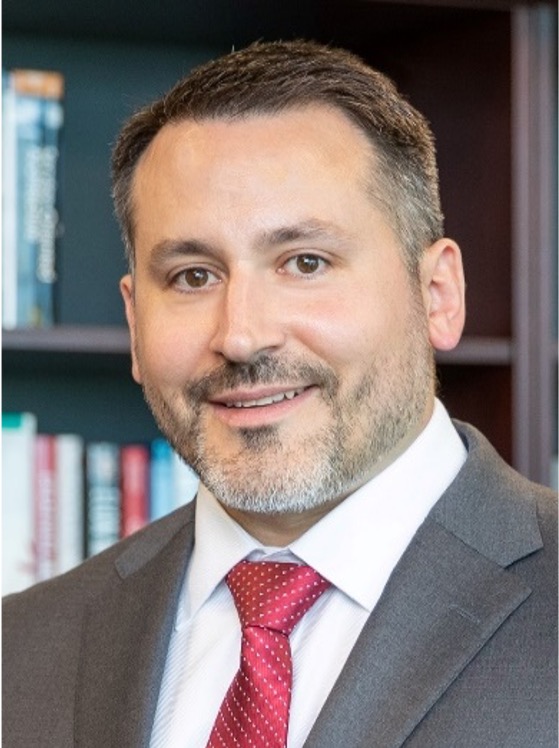 Dr. Charles Clancy
Dr. Charles Clancy
Dr. Charles Clancy is senior vice president, general manager of MITRE Labs, and chief futurist. He is responsible for sparking innovative disruption, accelerating risk-taking and discovery, and delivering real-time technology capabilities and execution through the company’s laboratories, solution platforms, and MITRE Fellows program. He leads technical innovation to anticipate and meet the future demands of government sponsors and industry and academic partners.
Clancy is an internationally recognized expert on topics at the intersection of wireless, cybersecurity, and artificial intelligence. Before joining MITRE in 2019 as vice president for intelligence programs, Clancy served as the Bradley Professor of Cybersecurity at Virginia Tech and executive director at the Hume Center for National Security and Technology. There, he led Virginia Tech’s research and experiential learning programs in defense and intelligence.
Clancy started his career at the National Security Agency, filling a variety of research, engineering, and operations roles, with a focus on wireless communications. He has co-authored more than 250 patents and academic publications, as well as six books. He co-founded several venture-backed security startup companies that apply commercial innovation to national security challenges.
He serves as a member of the AFCEA Board of Directors’ Executive Committee, the AFCEA Intelligence Committee, the Intelligence and National Security Alliance Advisory Committee, the Systems Engineering Research Center Advisory Board, the Alliance for Telecommunications Industry Solutions NextG Alliance, the Center for New American Security Task Force on Artificial Intelligence and National Security, and the International Advisory Panel for Singapore Manufacturing, Trade, and Connectivity. He also serves on advisory boards at Howard University, Norfolk State University, North Carolina A&T State University, and Virginia Tech.
Clancy holds a bachelor’s degree in computer engineering from the Rose-Hulman Institute of Technology, a master’s degree in electrical engineering from the University of Illinois at Urbana- Champaign, and a doctorate in computer science from the University of Maryland, College Park.
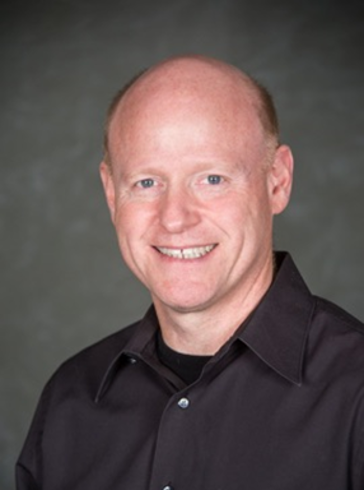 Dr. Eric W. Burger
Dr. Eric W. Burger
Dr. Eric W. Burger is a Research Professor of Computer Science at Georgetown University (2011-present). He recently returned to Georgetown full time after his detail to the U.S. Federal Communications Commission, where he served as CTO (2017-2019) and detail to the White House Office of Science and Technology Policy, where he served as the Assistant Director (2019-2021). He was instrumental in the repurposing of the 3.45 – 3.55 GHz band from Federal to private use (see FCC Auction 110), and amongst other duties, he was responsible for the Administration’s communications and cybersecurity priorities, R&D budget, and the R&D, test, and standards portions of the Administration’s Securing 5G and Beyond Implementation Plan. Prior to Georgetown, Dr. Burger was the CTO of several network equipment and enterprise software companies. Dr. Burger is a Senior Member of the National Academy of Inventors, a Distinguished Member of the ACM, and a Senior Member of the IEEE. He has an SBEE, MBA, and Ph.D. in Computer Science from the Massachusetts Institute of Technology, Katholieke Universiteit Leuven, and Illinois Institute of Technology.
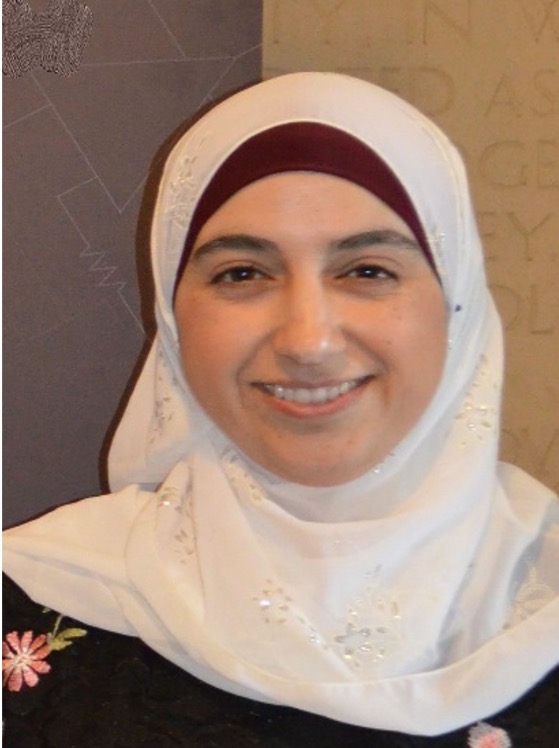 Dr. Eman Hammad
Dr. Eman Hammad
Dr. Eman Hammad is a cybersecurity professional & interdisciplinary professional focusing on trustworthy & resilient complex systems and emerging technologies. She obtained her Ph.D. in Electrical & Computer Engineering from the University of Toronto. Eman combines practical experience and theoretical research to shape her vision for resilient-by-design solutions in the connected world. She is the director of the innovations in the Systems Trust & Resilience (iSTAR) lab. Eman's work has been published in more than 50 papers, was recognized with merit awards (best paper award, best poster award), and has been featured on multiple outlets. Most recently, she was honored as one of Canada's Top 20 Women in Cybersecurity. Eman is a senior IEEE member currently serving as the co-chair of the IEEE 5G Security working group for the International Network Generations Roadmap (INGR) and as the Toronto ComSoc chair. She delivered numerous invited talks in academic and industrial conferences, chaired and co-chaired several conferences and workshops, and participated in several panels. She serves on the advisory board of several initiatives and is an active advocate for diversity and inclusion in STEM and Cybersecurity. Her service has been recognized by IEEE exceptional, chapter achievement, and exemplary service awards.
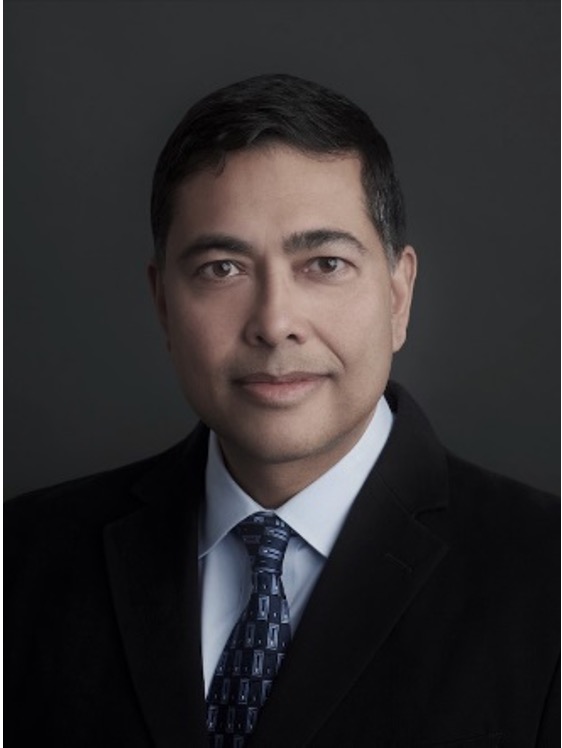 Narendra Mangra
Narendra Mangra
Narendra Mangra is the Principal at GlobeNet LLC, where he provides advisory and consulting services for clients in academia, industry, and government. He has both a deep foundation in the wireless telecommunications ecosystem and wide experience across mobile and fixed broadband telecommunications, public safety, agriculture, transportation, and health care ecosystems. His experience spans several key roles within the end-to-end mobile ecosystem, mobile network design and deployment lifecycle, procurement lifecycle, and the program/project management lifecycles.
Narendra is also the Co-Chair for several IEEE technology roadmaps, standards development, and industry connection activities that include the Future Networks International Network Generations Roadmap (INGR), Applications and Services WG, Young Professionals Education, IEEE SA P1950.1 Smart Cities Architecture Standards Development, Transdisciplinary Framework Industry Connections, and the Telehealth Industry Connections. He also contributes to the Public Safety Task Force initiative. His current interests include comprehensive transdisciplinary frameworks, 5G and technology convergence, smart regions, and related ecosystems
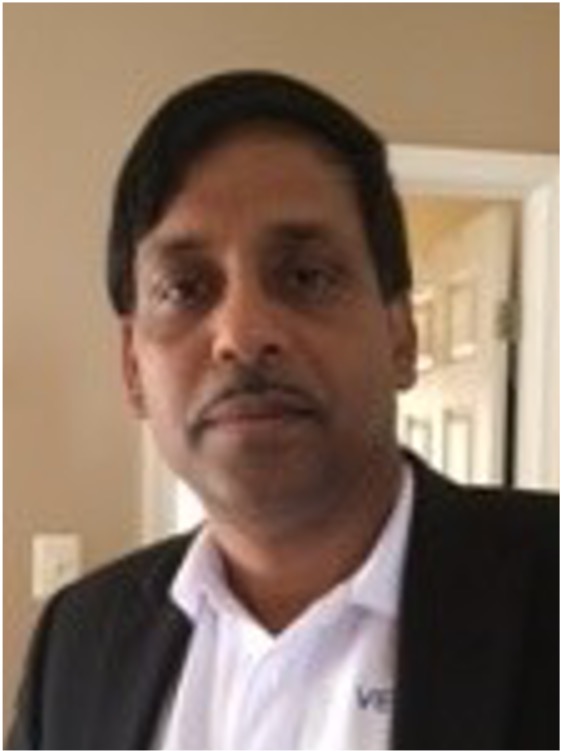 Dr. Subir Das
Dr. Subir Das
Dr. Subir Das is a Chief Scientist at Peraton Labs, Basking Ridge, New Jersey, USA, and has more than 25 years of research and development experience. His areas of interest are Mobile Wireless IP Networking (3G/4G/5G), Low power Personal Area Networking, WLAN and Edge Networking, Industrial Control System Security, and network and Internet of Things (IoT) security. Dr. Das is responsible for developing strategic programs, researching new technologies, and transitioning such technologies. Dr. Das is also a leading contributor to various Standards (e.g., IEEE, IETF, 3GPP, and ZigBee). He is currently leading the NS/EP priority access activities in IEEE 802.11 and in Wi-Fi Alliance. He is also an Executive Member of the IEEE 802 LAN/MAN Standards Committee and holds a leadership position in the ZigBee Alliance. Dr. Das contributes to developing protocols in IETF and held IETF leadership positions in the past. He was also actively involved in developing Cellular (3G/4G (LTE)) networking technologies in 3GPP. He has published nearly 100 papers, 5 IETF RFCs and has been granted 30 US patents. Dr. Das is a recipient of the 2009 IEEE Region I Award for outstanding contribution to Next Generation Wireless Networks, Protocols, and its Standardization Efforts. He served as a review member in the National Science Foundation, USA, and the National Science and Engineering Council, Canada award review committees. Dr. Das is a frequent speaker and an organizer of Industry Panels in IEEE and other international conferences. He is a member of the IEEE and a reviewer of IEEE and ACM journals and technical magazines.
IPA-2: Non-terrestrial Networks in 5G and 6G
(12 April, 14:00 CST, 415B, 4th Floor)
Moderator: Giovanni Geraci, Universitat Pompeu Fabra (UPF), Barcelona, Spain
Panelists:
Antonio Franchi, Head of Future Programme Acquisition, European Space Agency, United Kingdom
Arunabha Ghosh, Senior Manager, Amazon Lab126, USA
Symeon Chatzinotas, Professor and Head of the SIGCOM Research Group, SnT, University of Luxembourg
Sebastian Euler, Senior Researcher and Standardization Delegate, Ericsson Research, Sweden
Abstract: The proliferation of new satellite constellations, high-altitude platforms, and drones is envisioned to complement terrestrial cellular networks in new ways. Following this vertical expansion, the wireless industry and academia have been working on integrating non-terrestrial communications in next-generation mobile networks with the ultimate goal of supporting the “Internet of Everyone.”
Indeed, GEO, MEO, and LEO satellites, as well as high-altitude platforms, are well-positioned to cover underserved areas and/or to complement ground connectivity in urban areas. Spaceborne and aerial communications can play a vital role in realizing ubiquitous coverage when a ground infrastructure is absent and greater resilience through diversification when it is present. Either aerial or space-borne cells could be offering multi-connectivity service to users whose terrestrial connection—due to overload, unavailability, or simply patchy coverage—is not as reliable as their use case might require, with such users receiving data from one pipe, the other, or both, as the integrated network sees fit.
Integrating and jointly operating multiple ground, airborne, and spaceborne network tiers could pave the way for seamless and limitless global connectivity. Several research questions, however, remain unanswered in terms of power and latency limitations, deployment, and architecture, spectrum sharing strategies, antenna design, and the role of AI in optimizing the integrated terrestrial and non-terrestrial cellular network of tomorrow.
In light of the unprecedented interest in the field, this panel will bring together industry and academic experts from both the cellular and satellite domains to share their latest updates and vision on the role of non-terrestrial networks in 5G and 6G.
Questions:
- What can we expect in terms of terrestrial and nonterrestrial network integration in 5G and what will instead have to wait for 6G?
- What is likely to be the strongest complement to terrestrial networks: GEO satellites, NGSO satellites, or HAPs?
- What do you think would be the primary use case for satellite operators: fixed broadband connectivity or direct access?
- How do you see the mutual position of mobile network operators and satellite operators: partners, competitors, or both?
- How should the spectrum be shared between mobile network operators and satellite operators: completely orthogonal bands, adjacent bands, or overlapping bands with a cognitive radio approach?
Biographies:
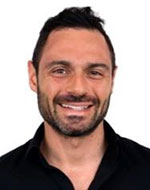 Giovanni Geraci
Giovanni Geraci
Giovanni Geraci (SM’19) is an Assistant Professor at Universitat Pompeu Fabra in Barcelona and the coordinator of the Telecommunications Engineering degree. He was previously a Research Scientist with Nokia Bell Labs and held a Ph.D. from UNSW Sydney. He also held research appointments at the Singapore University of Technology and Design, The University of Texas at Austin, CentraleSupelec, and Alcatel-Lucent.
He is an IEEE ComSoc Distinguished Lecturer, an Editor for the IEEE Transactions on Wireless Communications and IEEE Communications Letters, and the IEEE ICC’22 Wireless Communications Symposium, co-Chair. He is a frequent organizer of IEEE international workshops, has delivered over ten between IEEE ComSoc tutorials, industry seminars, and workshop keynotes, and co-edited the book “UAV Communications for 5G and Beyond” (Wiley – IEEE Press). He is also co-inventor of a dozen patents, has written for the IEEE ComSoc Technology News, and received international press coverage.
Giovanni was awarded two of the most competitive early-career fellowships in Spain: a “la Caixa” Junior Leader and a “Ramon y Cajal” Fellowship. He was named an Exemplary Reviewer for the IEEE Transactions on Wireless Communications in 2017 and 2018. He received the Nokia Bell Labs Ireland Certificate of Outstanding Achievement in 2017, the IEEE ComSoc EMEA Outstanding Young Researcher Award in 2018, and the IEEE PIMRC’19 Best Paper Award for his work on UAV-to-UAV Cellular Communications.
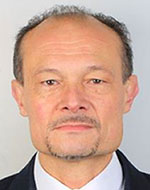 Antonio Franchi
Antonio Franchi
Antonio Franchi works at the European Space Agency, where he is the Head of Future Programmes Acquisition. His current interests are in Satellite 5G and in Satellite Megaconstellations. Antonio has 28 years of experience in the satellite telecommunications industry. Prior to ESA, Antonio worked for over 20 years with a major global satellite operator, spearheading a new generation of satellite communications systems. He is the author of 30+ articles and papers published at international conferences and professional magazines, and he holds five international patents in the satcom field.
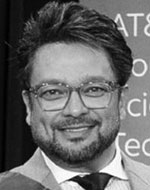 Arunabha Ghosh
Arunabha Ghosh
Arunabha Ghosh is a Senior Manager at Amazon Lab126, responsible for communication systems design for Kuiper. Previously, he was an AT& T Fellow and the director of the Advanced Wireless Technology Group at AT& T Labs. He received his Ph.D. from the University of Illinois at Urbana-Champaign.
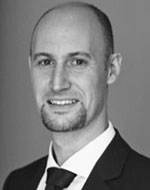 Symeon Chatzinotas
Symeon Chatzinotas
Symeon Chatzinotas is a Full Professor and Head of the SIGCOM Research Group at SnT, University of Luxembourg. He is acting as a PI for more than 20 projects. He was the co-recipient of the 2014 IEEE Distinguished
Contributions to Satellite Communications Award and Best Paper Awards at EURASIP JWCN, CROWNCOM, ICSSC. He has co-authored more than 450 technical papers. He serves on the editorial board of the IEEE Transactions on Communications, IEEE Open Journal of Vehicular Technology, and the International Journal of Satellite Communications and Networking.
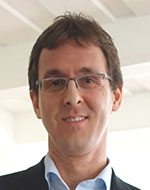 Sebastian Euler
Sebastian Euler
Sebastian Euler is a Senior Researcher at Ericsson Research in Stockholm, Sweden. He joined Ericsson in 2016 and has since focused on the standardization of Non-Terrestrial Networks in 3GPP, extending the LTE and 5G New Radio standards with support for satellite networks and aerial vehicles. In 2021, he received the IEEE Communications Society Fred W. Ellersick Prize. He has a background in particle physics, and received his Ph.D. from RWTH Aachen University, Germany, in 2014.
IPA-3: AI for Network and Network for AI
(13 April 09:00 CST, 415A, 4th Floor)
Moderator: Peiying Zhu, Huawei Technologies Canada Co., Ltd.
Panelists:
Geoffrey Ye Li, Imperial College London, UK
Tony Quek, Singapore University of Technology and Design, Singapore
Octavia Dobre, Memorial University, Canada
Il-Min Kim, Queens University, Canada
Haris Gačanin, RWTH Aachen University, Germany
Taesang Yoo, Qualcomm, USA
Abstract: Following 5G that is connecting IoT, 6G would connect Intelligence, that is, to bring about top-notch intelligence to ending users and to exploit distributed intelligence resources in an optimal way. This task could be roughly divided into two modes: net4AI and AI4net.
For Net4AI, 6G is designed to serve AI applications that are different from traditional non-AI ones in many aspects such as data precision, latency, safety criticality, training/reasoning procedure, etc.. Besides, future commercial AI applications may request billions of neurons whose distribution, storage, exchange, and an update would present great challenges for 6G wireless system.
For AI4Net, spectrum efficiency of 6G may be further improved by AI technologies and connected AI edge communication resources. However, more challenges would be between AI’s generalization and the ever-changing channel environment. Some AI breakthroughs such as RL, transfer learning, federated learning, and GAN may become promising solutions.
Questions:
- [Net4AI: big model]: Along with the recent AI tendency that DNN is becoming bigger and bigger, it is expected that commercial level DNNs in 2030 would have billions of neurons. Training them and even inference over them would be costly in terms of energy, cooling, storage, computations. Following the well-known cycle of centralization and distribution, how does 6G, Net4AI as a target, handle it? For example, can 6G become an organizer and optimizer of distributive AI resources over a wide network?
- [Net4AI: training data set]: Training a DNN-based AI is to learn the most essential, goal-oriented, and persistent patterns and distributions among the training data set. As 6G will be transmitting training data sets, shall 6G transmit them accurately without any bit error or 6G shall consider a new source coding scheme or mechanism for training data sets?
- [Net4AI: federated learning]: As DNN grows bigger, it would be extremely costly to transmit the gradients of an entire DNN in 6G for federated learning, especially in an uplink. How can typical wireless technologies such as partial transmission, retransmission, incremental transmission, adaptive modulation coding scheme, adaptive scheduling help deployment of federated learning? How will non-i.i.d data distribution among workers affect the gradient transmission over 6G? How will clustering among workers affect the scheduling over 6G?
- [AI4Net: semantic communication]: Once moved to the semantic level, source information could be compressed significantly and save transmission bandwidth. The most semantic codec can be learned in a data-driven and goal-oriented way. Most semantic communication examples are given in the area of texts, audio, and images. However, none of them is the bottleneck for wireless bandwidth. In which areas or applications can AI-driven semantic communication reduce important bandwidth?
- [AI4Net: Reinforcement Learning]: Wireless channel environment is ever-changing. Although DNN has great improvement in memorizing changes and features by training data set, a true situation may become stranger. DNN must adapt itself to the new situation. RL is one of the most promising technologies. However, RL is limited to its complexity in terms of dimensions of states, especially in a real-time wireless case. This would eventually limit RL in 6G. As 6G will introduce more dimensions or degrees of freedom, how can RL continue to tackle them?
Biographies:
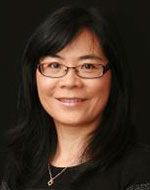 Peiying Zhu
Peiying Zhu
Peiying Zhu, Senior Vice President of Wireless Research, is a Huawei Fellow, IEEE Fellow, and Fellow of the Canadian Academy of Engineering. She is currently leading 5G and beyond wireless research and standardization in Huawei. The focus of her research is advanced radio access technologies. She is actively involved in 3GPP and IEEE 802 standards development. She has been regularly giving talks and panel discussions on 5G vision and enabling technologies. She led the team to contribute significantly to 5G technologies. Prior to joining Huawei in 2009, Peiying was a Nortel Fellow and Director of Advanced Wireless Access Technology in the Nortel Wireless Technology Lab. She led the team and pioneered research and prototyping on MIMO-OFDM and Multi-hop relay. Many of these technologies developed by the team have been adopted into LTE standards and 4G products. Dr. Zhu has more than 200 granted patents.
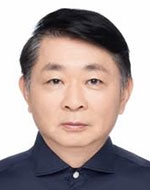 Geoffrey Ye Li
Geoffrey Ye Li
Geoffrey Ye Li is currently a Chair Professor in wireless systems with Imperial College London. Before joining Imperial in 2020, he was with Georgia Institute of Technology for 20 years and AT& T (Bell) Labs – Research for about five years. His general research interests include statistical signal processing and machine learning for wireless communications. In the related areas, he has published over 500 journal and conference papers in addition to over 40 granted patents. His publications have been cited by over 40,000 times and he has been recognized as the World’s Most Influential Scientific Mind, also known as a Highly Cited Researcher, by Thomson Reuters almost every year.
Dr. Li was awarded IEEE Fellow for his contributions to signal processing for wireless communications in 2005. He won several prestigious awards from IEEE Signal Processing Society (Donald G. Fink Overview Paper Award in 2017), IEEE Vehicular Technology Society (James Evans Avant Garde Award in 2013 and Jack Neubauer Memorial Award in 2014), and IEEE Communications Society (Stephen O. Rice Prize Paper Award in 2013, Award for Advances in Communication in 2017, and Edwin Howard Armstrong Achievement Award in 2019). He also received the 2015 Distinguished ECE Faculty Achievement Award from Georgia Tech.
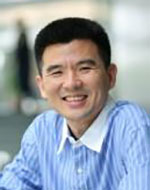 Tony Quek
Tony Quek
Tony Q.S. Quek is a tenured Full Professor with the Singapore University of Technology and Design (SUTD), leading the Wireless Networks and Decision Systems (WNDS) Group. He is also the Director of Future Communications R&D Programme, ISTD Pillar Head, Sector Lead of SUTD AI Program, and Deputy Director of the SUTD-ZJU IDEA. He received the B.E. and M.E. degrees in Electrical and Electronics Engineering from Tokyo Institute of Technology, respectively. At MIT, he earned a Ph.D. in Electrical Engineering and Computer Science. He is a member in the Signal Processing for Communications and Networking Technical Committee, a Distinguished Lecturer of the IEEE Communications Society, and a Fellow of IEEE.His current research interests include wireless communications and networks, network intelligence, big data processing, URLLC, and IoT.
 Octavia Dobre
Octavia Dobre
Octavia A. Dobre received the Dipl.-Ing. and Ph.D. degrees from the Polytechnic Institute of Bucharest, Romania, in 1991 and 2000, respectively. She was the recipient of a Royal Society (UK) Scholarship in 2000 and a Fulbright Fellowship in 2001. Between 2002 and 2005, she was with the Polytechnic Institute of Bucharest and New Jersey Institute of Technology, USA. In 2005, she joined Memorial University (MUN), Canada, where she is currently a Professor and Research Chair.
Dr. Dobre currently serves as Editor-in-Chief of the IEEE Communications Letters, as well as Editor of the IEEE Systems and IEEE Communications Surveys and Tutorials. She was an Editor and a Senior Editor of the IEEE Communications Letters, an Editor of the IEEE Transactions on Wireless Communications, and a Guest Editor of other prestigious journals. She served as General, TPC and Tutorial Chair for numerous IEEE conferences. She is the Chair of the IEEE ComSoc Signal Processing and Communications Electronics Technical Committee and served as Chair of the IEEE ComSoc Women in Communications Engineering standing committee. Dr. Dobre is the recipient of the 2015 MUN President’s Award for Outstanding Research and a Fellow of the Engineering Institute of Canada.
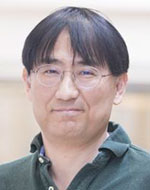 Il-Min Kim
Il-Min Kim
Il-Min Kim received the B.S. degree in electronics engineering from Yonsei University, Seoul, Korea, in 1996, and the M.S. and Ph.D. degrees in electrical engineering from the Korea Advanced Institute of Science and Technology (KAIST), Taejon, Korea, in 1998 and 2001, respectively. From July 1997 to Aug. 2001, he worked as a Member of the Technical Staff at the Electronics and Telecommunications Research Institute (ETRI). From October 2001 to August 2002 he was with the Dept. of Electrical Engineering and Computer Sciences (EECS) at Massachusetts Institute of Technology (MIT), Cambridge, USA, and from September 2002 to June 2003 he was with the Dept. of Electrical Engineering at Harvard University, Cambridge, USA, as a Postdoctoral Research Fellow. In 2003, he joined the Dept. of Electrical and Computer Engineering at Queen's University, Kingston, Canada, as an Assistant Professor. In 2009, he was promoted to the rank of Associate Professor and in 2014 he was promoted to the rank of Full Professor. He is currently Director of Wireless Artificial Intelligence Laboratory (WAI lab).
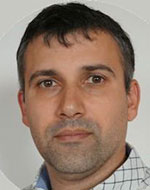 Haris Gačanin
Haris Gačanin
Haris Gačanin received his Dipl.-Ing. degree in Electrical engineering from the University of Sarajevo in 2000. In 2005 and 2008, respectively, he received MSc and Ph.D. from Tohoku University in Japan. He was with Tohoku University from 2008 until 2010 first as a Japan Society for Promotion of Science postdoctoral fellow and later, as Assistant Professor. In 2010, he joined Alcatel-Lucent, now Nokia, where he was a Department Head at Nokia Bell Labs until 2020. From 2017 until 2020 he was an adjunct professor at the University of Leuven (KU Leuven). Currently, he is a chair professor at RWTH Aachen University, Aachen, Germany.
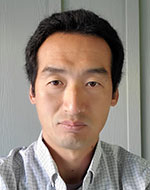 Taesang Yoo
Taesang Yoo
Taesang Yoo is a Sr. Director, Technology, in Wireless R&D Qualcomm Research, San Diego, CA, USA. He received his B.S. degree (Hons.) in electrical engineering from Seoul National University, Korea, in 1998, and his M.S. and Ph.D. degrees in electrical engineering from Stanford University, California, in 2003 and 2007. Since 2006, he has been with Qualcomm, where he has worked on LTE MIMO standards, LTE/LTE-A UE modem and advance receiver algorithms, baseband and RF interference cancellations, heterogeneous cellular networks, unlicensed system designs, CoMP Joint Transmission prototypes, precise indoor positioning, and machine learning for wireless communications and air-interface. He was one of the pioneers for multi-user MIMO and CRS interference cancellation. His expertise includes wireless communications, machine learning and deep learning, signal processing, and their applications to wireless systems design and 3gpp standards. He holds over 200 US granted patents and over 1000 internationally. He is currently leading wireless AI/ML research in Wireless R&D Qualcomm Research, focusing on wireless AI/ML air-interface and data-driven 5G/6G system design.
IPA-4: 5G and Beyond Applications for Industry 4.0 and for Industry 5.0
(13 April, 09:00 CST, 415B, 4th Floor)
Moderator: Ke Guan, Professor, Deputy Director of Key Laboratory of Railway Industry of Broadband Mobile Information Communications, Beijing Jiaotong University, China
Panelists:
Bo Sun, Senior Specialist, ZTE Corporation
Maziar Nekovee, Professor, Dean of AI Institute, University of Sussex ZJSU and CTO, Quantrom Technologies Ltd.
Jiadong Du, Deputy Director of the 5G Application Innovation Center of the Institute of Technology and Standards of China Academy of Information and Communications Technology (CATR))
Valerio Frascolla, Director Research, and Innovation, Intel Labs
Marion Berbineau, Research Director, Université Gustave Eiffel in France
Abstract: Digitalization of the society, climate change, increasing demand in services and resources, supply chains, and resiliency; these mega-trends all have major implications and pose new requirements in shaping the evolution of Industrial production moving towards Industry 5.0. One essential trend is the digital transformation that is visibly marked being currently deployed through the Industry 4.0 concept. Mobile applications, digital control, signaling and traffic management, digital platforms for predictive maintenance are the key areas of the digital economy in industrial production. All of the above poses a future-proof new set of requirements, e.g., both advancement in fiber-based connectivity and wireless deployments in industrial environments, evolved mobile technologies and innovative satellite solutions, implementing 5G networks, and beyond (B5G/6G). These communication infrastructures as well as other key digital technologies (artificial intelligence, big data, cloud computing, internet of things, etc.,) will not only contribute to the digitization of the current industry but also trigger innovative digital business models to create new value chains for consumers and businesses.
Given that the industry has its own specific requirements for optimally customized service delivery, the ICT technologies, such as 5G Advanced/6G communication systems will need to provide tailor-made solutions for Industry 4.0/5.0 against the “one size fits all anywhere, anytime” approach of current systems. Therefore, it is of key importance to provide a platform where both the vertical industry and the communication industry can meet and converge. The aim of this panel is to contribute to this need by bringing together experts from both sectors together, who will discuss paradigm shift and roadmaps towards new approaches, future communication, and related technologies as enablers of the forthcoming Industry 5.0 paradigm, which is supposed to be ready to meet tomorrow's expectations and challenges, including sustainability, advanced security and safety operations, digital twinning and full digitalization.
Questions:
- What are your visions for the evolution of Industry 4.0 towards Industry 5.0 and how will the revolutionary changes in the industry affect society and the economy?
- What is the most urgent demand for the intelligent industry in the future that the existing communication system cannot meet? What are the main technical bottlenecks of the existing technology to meet this demand?
- What are the most crucial challenges for the ICT technologies to fulfill the requirement of key verticals industries like smart factory/railway (in terms of technology, policy, standards, or international collaborations)?
- How can industry (commercial companies) and academia (universities, research institutes) better synergize in the future? What can each side provide and in what aspects both sides can benefit?
- What are the climate impact of digital technologies and how can the ICT sector help the vertical industry address the climate challenge?
Biographies:
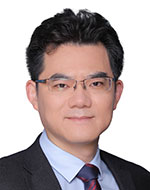 Ke Guan
Ke Guan
Ke Guan received a B.E. degree and Ph.D. degree from Beijing Jiaotong University in 2006 and 2014, respectively. He is a Full Professor in State Key Laboratory of Rail Traffic Control and Safety & School of Electronic and Information Engineering, Beijing Jiaotong University. In 2015, he has been awarded a Humboldt Research Fellowship for Postdoctoral Researchers. From 2009 to 2018, as a Visiting Scholar, he spent 5 years in total at Institut fuer Nachrichtentechnik (IfN) at Technische Universitaet Braunschweig, Germany and Universidad Politecnica de Madrid, Spain. He has authored/co-authored two books and one book chapter, more than 300 journal and conference papers, and four patents. His current research interests include measurement and modeling of wireless propagation channels, high-speed railway communications, vehicle-to-x channel characterization, and indoor channel characterization for high-speed short-range systems including future terahertz communication systems. Dr. Guan is the pole leader of EURNEX (European Railway Research Network of Excellence). He was the recipient of a 2014 International Union of Radio Science (URSI) Young Scientist Award. His papers received ten Best Paper Awards, including IEEE vehicular technology society 2019 Neal Shepherd memorial best propagation paper award. He is an Editor of IEEE Vehicular Technology Magazine, IEEE ACCESS, IET Microwave, Antenna and Propagation, Physical Communication, and a Guest Editor of the IEEE Transactions on Vehicular Technology and IEEE Communication Magazine. He serves as a Publicity Chair in PIMRC 2016, the Publicity Co-Chair in ITST 2018, the Track Co-Chair in EuCNC, the International Liaison of EUSIPCO 2019, the Session Convener of EuCAP 2015-2019, and a TPC Member for many IEEE conferences, such as Globecom, ICC, and VTC. He has been a delegate in 3GPP and a member of the IC1004, CA15104, and CA20120 initiatives.
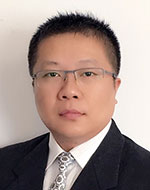 Bo Sun
Bo Sun
Mr. Bo Sun is a senior specialist in wireless communication technology and standardization in ZTE Corporation. His research interests include wireless communication system design and implementation, IoT and next-generation wireless technologies, etc. He is proactive in IEEE wireless standard development and was honored with contribution awards for his contribution to several IEEE 802.11 standards. He was the PHY adhoc co-chair of IEEE 802.11 TGax which has successfully developed IEEE 802.11ax standard (a.k.a. Wi-Fi 6). Now, he is the chair of IEEE 802.11 TGbd (a.k.a. Next Generation V2X). He is also the chair of China NITS SC41 (IoT) WG2 (Networking and Communications).
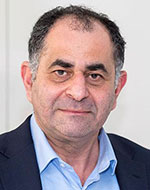 Maziar Nekovee
Maziar Nekovee
Prof. Maziar Nekovee is Dean of the AI Institute at the University of Sussex-ZJSU and CTO of Quantrom Technologies, a start-up focusing on disruptive technologies for and investment in mobile communication and AI sectors. His current research focuses on THz communication for 6G and beyond, the applications of 5G/6G and AI in the health and other verticals, and sustainability. Prior to joining U. Sussex in 2017, he was Head of Samsung's European research and collaboration in 5G, where he developed new radio access technologies operating in millimeter-wave bands. Prior to Samsung, he was with BT, where he worked on a range of fixed and wireless technologies, including cognitive radio/dynamic spectrum sharing, WiFi-based V2X, peer-to-peer and IP multicast. Maziar is the author of 120+ highly cited papers, 15 patents, and one book. He has a Ph.D. in Physics and the first degree in EEE, both from the Netherlands. He is co-chair of NetWorld Europe ETP, WG on Enabling Technologies and Verticals.
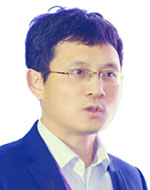 Jiadong Du
Jiadong Du
Dr. Jiadong Du has long been engaged in technical research and standardization of the Internet of Things, wireless communication technology, mobile core network, etc., and has deep research on 5G and Internet of Things, Internet of Vehicles, Industrial Internet, etc. In recent years, Dr. Du has hosted and participated in many national science and technology Major Patents. He has been responsible for and participated in the support of related projects such as the Chinese Academy of Engineering, the National Development, and Reform Commission of China, the Ministry of Science and Technology of China, and the Ministry of Industry and Information Technology of China. At the same time, Dr. Du is also responsible for international and China standardization works in the Internet of Things. Internationally, Mr. Du participates in the relevant standardization work of international standardization organizations such as 3GPP, IEEE 802.11/802.15, oneM2M, etc.; In China, Mr. Du is responsible for the standardization of China's Internet of Things wireless technologies and applications. Dr. Du has published more than ten articles in various academic journals and participated in the compilation of books such as Evolved Packet System (EPS) Application Technology and Broadband China and the Internet of Things.
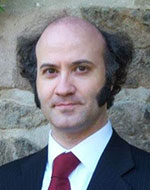 Valerio Frascolla
Valerio Frascolla
Valerio Frascolla (MSc and Ph.D. in Electronic Engineering) is Director of Research and Innovation at Intel and had been working at Ancona University, Comneon, Infineon, and as a reviewer for the European Commission. He serves as chairman of several workgroups in European associations and is a board of directors’ member of the BDVA association. He has expertise in wireless systems architecture, requirements management, and standardization. He is the author of 70+ publications, a reviewer for 25+ journals, has participated in the TPC of more than 60 conferences.
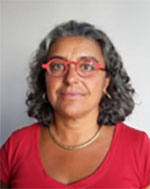 Marion Berbineau
Marion Berbineau
Marion Berbineau received the Engineer degree from Polytech’Lille (France) and the Ph.D. degree from the Univ. of Lille, both in electrical engineering, respectively in 1986 and 1989. She is a full-time Research Director at Université Gustave Eiffel in France, in the Component and SYStem department. She is an associated researcher at LEOST laboratory. She is an expert in the fields of radio wave propagation and signal processing in transport environments (particularly in railway tunnels and high-speed lines), electromagnetic modeling, channel characterization, and modeling, MIMO, wireless systems for telecommunications, cognitive radio for railways, and GNSS localization-based system for ITS particularly for the rail and public transport domains. She is responsible for Railway research coordination at the university. She is active as an expert for the GSM-R and FRMCS and future systems like 5G NR and beyond 5G. She is involved in several national and European research projects. She is the author and co-author of several publications and patents. She is an expert at the French national council for the railway system. She is on the reserve list of the Scientific Council of Shift2rail.
IPA-5: From Theory to Practice: Emerging Antenna Array Technologies for 5G-Advanced
(13 April, 09:00 CST, 414, 4th Floor)
Moderator: Zhenfei Tang, Senior Manager of Wireless Research, Huawei
Panelists:
Gerhard Fettweis, Vodafone Chair Professor, TU Dresden, Germany
Juho Lee, Fellow (Technical SVP), Samsung, South Korea
Emil Björnson, Associate Professor, Linköping University, Sweden
John E. Smee, Vice President of Engineering, Qualcomm, USA
Rui Sun, Senior Vice President of Wireless Research, Huawei, China
Abstract: With the rapid deployment of 5G networks and the maturity of 5G handsets, more and more new applications keep emerging in the market, which definitely triggers an explosion of mobile data traffic. It is projected that the data of usage (DoU) of an individual user per month will reach 150 GB by 2025 from 10 GB in 2020 at a compound annual growth rate (CAGR) of 65%. In addition to traditional data service, AV/VR will become popular and contribute DoU largely beyond 2025.
Toward 2025 and beyond, to meet these requirements and challenges, 5G-Advanced was approved by 3GPP for further evolving 5G with emerging technologies. 5G-Advanced will start from Release-18 and continue several releases.
Massive multiple-input multiple-output (MIMO) is one of the key enabling technologies and building blocks of 5G for both sub-7 GHz and mmWave frequencies to meet the extremely higher data rate. The evolution of massive MIMO is also recognized as one of the most crucial technical means in 5G-Advanced.
In theory, recently several prospective antenna array technologies represented by massive MIMO are emerging and getting more and more attention towards 5G-Advanced. For example, novel antenna system architectures, such as extremely large aperture arrays (ELAA) and smart surfaces (e.g., intelligent reflecting surfaces (IRSs) or reconfigurable intelligent surfaces (RISs)), and evolved network architectures, such as cell-free massive MIMO or user-centric no cell (UCNC) deployment. Machine learning (ML) used for massive MIMO is also one of the hot topics for research.
However, in practice to render these promising technologies feasible for commercial rolling-out in the future, there are still many issues and challenges that need to be addressed. The fundamental question is that in which practice scenarios those emerging technologies provide a significant performance advantage over traditional technologies, such as massive MIMO, relay, and repeater. With increasingly complex implementation, reducing the product cost, size, and weight while maintaining the performance is one of the crucial factors for real deployment.
This panel of experts will be engaged in exchanging views on emerging multi-antenna array technologies from both theory and practice perspectives. We hope that this will inspire a large number of researchers and engineers from both academia and industry to think about and tackle the open issues towards the successful applications of these technologies in 5G-Advanced toward 2025 and beyond.
Questions:
- In theory, what is emerging antenna technologies for the next step of massive MIMO evolution?
- In theory, among these emerging antenna technologies which one is the most disruptive one which provides enormous gain and changes the current massive MIMO architecture? And why?
- In theory, Would AI/ML be applied widely for massive MIMO which has already mature mathematical modeling and digit signal processing? And why?
- In practice, whether new antenna architecture, such as ELAA, IRS/RIS, and cell-free massive MIMO or user-centric no cell (UCNC), will be used for 5G-Advanced towards 2025 and beyond.
- In practice, what are the obstacles for these emerging antenna technologies used for 5G-Advanced? What are the research and engineering directions to make those technologies happen in real deployment?
Biography:
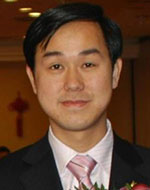 Zhenfei Tang
Zhenfei Tang
Zhenfei Tang is the senior manager of wireless research in Huawei. He led 5G evolution research and managed a series of national projects from Huawei. He has been engaged in the research for 3G, 4G, and 5G wireless communications systems and was the major representative of Huawei in 3GPP and IMT-Advanced Promotion Group in China since he joined Huawei Technologies Co., Ltd in 2005. Mr. Tang has more than 100 granted patents in the area of wireless communications and contributed more than 500 papers to international standards and meetings. He received his M.S. degree from Beijing University of Posts and Telecommunications in 2004.
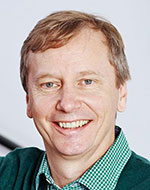 Gerhard Fettweis
Gerhard Fettweis
Gerhard Fettweis is a pioneering researcher in wireless technology. He has been the Vodafone chair professor at the Technical University of Dresden (TU Dresden), in Germany, since 1994 and the head of the Barkhausen Institute since 2018. Fettweis has published more than 1,000 academic papers, and his research primarily focuses on wireless transmission and chip design for wireless Internet of Things (IoT) platforms. Fettweis coordinates the 5G Lab Germany and two German Research Foundation (DFG) centers at TU Dresden: the Center for Advancing Electronics Dresden (CFAED) and the Highly Adaptive Energy-Efficient Computing (HAEC) research center. He is also a member of the German National Academy of Sciences Leopoldina and the German Academy of Science and Engineering (ACATECH). He has received multiple IEEE recognitions, as well as the “Ring of Honor,” the highest award from the Institution of German Electrical Engineers (VDE). He co-chairs the IEEE 5G Initiative and has helped organized numerous IEEE conferences, most notably as chair of the 2009 International Conference on Communications (ICC) and chair of the 2012 Technology Time Machine (TTM) conference.
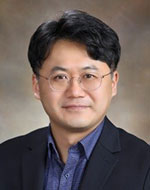 Juho Lee
Juho Lee
Juho Lee is currently a Fellow (technical SVP) with Samsung Electronics, where he is leading research and standardization for mobile communications. He joined Samsung Electronics in 2000 and has worked on 3G, 4G, and 5G technologies and is leading research for future technologies such as beyond 5G and 6G. He was a vice-chairman of 3GPP RAN WG1 from February 2003 to August 2009 and chaired LTE/LTE-Advanced MIMO sessions. He also served as the rapporteur of the work item for specifying CoMP in 3GPP LTE-Advanced Rel-11. Dr. Lee is a Fellow of IEEE. He received his B.S., M.S., and Ph.D. degrees in electrical engineering from Korea Advanced Institute of Science and Technology (KAIST), Korea, in 1993, 1995, and 2000, respectively.
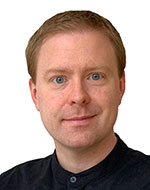 Emil Björnson
Emil Björnson
Emil Björnson received the M.S. degree in engineering mathematics from Lund University, Sweden, in 2007, and the Ph.D. degree in telecommunications from the KTH Royal Institute of Technology, Sweden, in 2011. From 2012 to 2014, he held a joint post-doctoral position at the Alcatel-Lucent Chair on Flexible Radio, SUPELEC, France, and the KTH Royal Institute of Technology. He joined Linköping University, Sweden, in 2014, where he is currently an Associate Professor. In September 2020, he became a part-time Visiting Full Professor at the KTH Royal Institute of Technology. He has authored the textbooks Optimal Resource Allocation in Coordinated Multi-Cell Systems (2013), Massive MIMO Networks: Spectral, Energy, and Hardware Efficiency (2017), and Foundations of User-Centric Cell-Free Massive MIMO (2021). He is dedicated to reproducible research and has made a large amount of simulation code publicly available. He performs research on MIMO communications, radio resource allocation, machine learning for communications, and energy efficiency. He has been on the Editorial Board of the IEEE Transactions on Communications since 2017. He has been a member of the Online Editorial Team of the IEEE Transactions on Wireless Communications since 2020. He has been an Area Editor in IEEE Signal Processing Magazine since 2021. He has also been a guest editor of multiple special issues. He has performed MIMO research for over 15 years, his papers have received more than 14000 citations, and he has filed more than twenty patent applications. He is a host of the podcast Wireless Future and has a popular YouTube channel. He has received the 2014 Outstanding Young Researcher Award from IEEE ComSoc EMEA, the 2015 Ingvar Carlsson Award, the 2016 Best Ph.D. Award from EURASIP, the 2018 IEEE Marconi Prize Paper Award in Wireless Communications, the 2019 EURASIP Early Career Award, the 2019 IEEE Communications Society Fred W. Ellersick Prize, the 2019 IEEE Signal Processing Magazine Best Column Award, the 2020 Pierre-Simon Laplace Early Career Technical Achievement Award, the 2020 CTTC Early Achievement Award, and the 2021 IEEE ComSoc RCC Early Achievement Award. He also co-authored papers that received Best Paper Awards at the conferences, including WCSP 2009, the IEEE CAMSAP 2011, the IEEE SAM 2014, the IEEE WCNC 2014, the IEEE ICC 2015, and WCSP 2017.
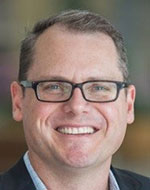 John E. Smee
John E. Smee
John E. Smee is a Vice President of Engineering at Qualcomm Technologies Inc., where he is the 5G R&D lead responsible for overseeing all 5G research projects including end-end systems design and advanced RF/HW/SW prototype implementations in Qualcomm’s wireless research and development group. He joined Qualcomm in 2000, holds over 100 U.S. Patents, and has been involved in the design, innovation, and productization of wireless communications systems such as 5G NR, 4G LTE, 3G CDMA, and IEEE 802.11. He also leads Qualcomm’s companywide academic collaboration program across technologies including wireless, semiconductor, multimedia, security, and machine learning. John was chosen to participate in the National Academy of Engineering Frontiers of Engineering program and received his Ph.D. in electrical engineering from Princeton University and also holds an M.A. from Princeton and an M.Sc. and B.Sc. from Queen's University.
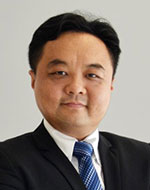 Rui Sun
Rui Sun
Rui Sun, Senior Vice President of Huawei Wireless Research, is currently leading the 5G and Beyond technologies research and development. He joined Huawei in 2000. For the past twenty years in Huawei, Mr. Sun has been served as Director of 2G/3G/4G R&D and business teams and has been accumulated remarkable expertise in the fields of product development, basic research, and industrial innovation. He has also made many outstanding achievements in each generation of mobile communications technology. In 2017, Mr. Sun was appointed to direct the Wireless Network Research Department, which was in charge of 5G technology research and standardization. Since then, he has been devoting himself to the development and commercialization of 5G and beyond. The concept and vision of 5.5G were first proposed by Mr. Sun and his team. His team collaborates with global universities and research institutes on more than 100 projects. Their work aims to help overcome worldwide technological challenges in 5.5G, including theoretical breakthrough, structure design, and prototype implementation.
IPA-6: Advanced Wireless Research in Texas
(12 April, 16:00 CST, 414, 4th Floor)
Moderator: Sarah LaSelva, Services Marketing Manager, Keysight
Panelists:
Taiyun Chi, Ph.D. Assistant Professor, Rice university, USA
Linda P.B. Katehi, Ph.D. O’Donnell Endowed Chair in Engineering and a Distinguished TEES Chair Professor of Electronics in the Electrical and Computer Engineering and the Material Science and Engineering departments at Texas A&M, College Station, USA
Brian Kelley, Ph.D. Associate Professor, University of Texas at San Antonio, USA
Jayakrishnan Mundarath, Ph.D., Systems and Architecture Engineer, NXP, USA
Charles Baylis, Ph.D. Professor of Electrical and Computer Engineering, Baylor University, USA
Abstract: Texas is home to some of the top universities and companies in the world for engineering. This panel brings together researchers from the across the central Texas area to discuss their research, collaborate between industry and academia, and the challenges that they see as critical to solve in 6G.
Questions:
- What is your lab currently focusing on in its research?
- What is the most important area of research to you for next generation wireless networks and why?
- How do you view current collaborations between industry and academia and what would you do to improve them?
Biographies:
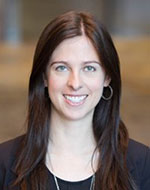 Sarah LaSelva
Sarah LaSelva
Sarah is a services marketing manager focused on services for wireless infrastructure products and solutions at Keysight. Sarah has spent the last 11 years working in the test and measurement industry concentrating on advanced wireless communications, both studying and promoting the latest wireless technologies. Prior to joining Keysight, Sarah worked at NI (National Instruments) as a product marketing manager for the software defined radio team where she gained a deep knowledge of SDR hardware, software, and wireless communications. Sarah’s background is in microwave and millimeter wave technology. She has a BS in electrical engineering from Texas Tech University.
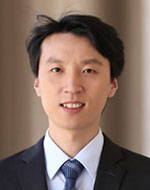 Taiyun Chi
Taiyun Chi
Taiyun Chi is an assistant professor of ECE at Rice University. His research interests include analog/RF/millimeter-wave integrated circuits for wireless communications, sensing, and biomedical applications. His group received the 2021 IEEE Custom Integrated Circuits Conference (CICC) Best Student Paper Award and the 2021 IEEE International Microwave Symposium (IMS) Advanced Practice Paper Award Finalist. He is also a recipient of the Sigma Xi Best Ph.D. Thesis Award (Georgia Tech Chapter) in 2018, the IEEE CICC Best Paper Award in 2017, the IEEE Solid-State Circuits Society (SSCS) Predoctoral Achievement Award in 2017, the IEEE Microwave Theory and Techniques Society (MTT-S) Graduate Fellowship for Medical Applications in 2016, and the USTC Guo Moruo Presidential Scholarship in 2012.
 Linda P.B. Katehi
Linda P.B. Katehi
Linda Katehi is the O’Donnell Endowed Chair in Engineering and a Distinguished TEES Chair Professor of Electronics in the Electrical and Computer Engineering and the Material Science and Engineering departments at Texas A&M, College Station. She is a member of the National Academy of Engineering (NAE), The American Academy for Arts and Sciences, The National Academy of Innovators (NAI) and a Fellow of IEEE. She was the Chair of the President’s Committee for the National Medal of Science and was the Chair of the Secretary of Commerce’s Committee for the National Medal of Technology and Innovation. She is a Fellow and served on the Board of the American Association for the Advancement of Science (AAAS) where she also served as the President for the Engineering Section. She served as a member of the National Higher Education Board, a member of the Higher Education Business Forum and many other national and international boards and committees. From 2017 until 2020 she served as the President-Elect, President and Past-President of the (WEPAN) Women in Engineering Professional Advocacy Network. Prof. Katehi’s research focuses on the design and development of intelligent edge RF-electronics, an area that involves, analog-hardware/algorithm co-design, deep machine learning and neuromorphic computations for the development of electronic components and systems that can evolve the performance on the basis of the operational space and collected data. These new research directions are founded in Katehi’s broad experience in 3D integration and packaging of microwave, millimeter-wave and sub Terahertz circuits; computer-aided design of VLSI interconnects; development and characterization of micromachined circuits for microwave, millimeter-wave, and submillimeter-wave applications including MEMS switches, high-Q evanescent mode filters, and MEMS devices for circuit reconfigurability; and the development of both frequency and time domain methods and algorithms.
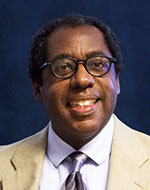 Brian Kelley
Brian Kelley
Dr. Kelley received his BSEE from Cornell University's College of Electrical Engineering in Ithaca, NY, graduating Tau Beta Pi and Eta Kappa Nu. He received his MSEE and PhD in E.E. from Georgia Tech in 1992. He was an Office of Naval Research Fellow and a Georgia Tech Presidential Fellow with a research focus on communications, Signal Processing, and high-performance computing architectures. He spent 10+ years in the industry with both Motorola and Freescale. Since 2007, Dr. Kelley has been an Associate Professor of Electrical and Computer Engineering at the University of Texas at San Antonio (UTSA). At UTSA, Dr. Kelley is Director of the Wireless Information and Next Generation Systems Laboratory (WINGS), emphasizing 5G, beyond 5G, and 6G Communications, and advanced models for cyber security. Dr. Kelley has received over $3.3M in research funding from NSF, ONR, AFRL, DoE, and DoD. He has over 70 refereed publications, holds 11 U.S. patents, and consults with the industry. Dr. Kelley has been an IEEE Technical Workshop Organizer, has served on the Technical Program Committee for IEEE Globecom, currently Chairs the IEEE Chapter of Communications and Signal Processing of San Antonio, and has been Associate Editor of the IEEE System Journal. From 2015-2016, Dr. Kelley was a Sabbatical Employee of the Department of Defense in Washington. In 2015 and 2017, he was also an ORISE Summer Faculty Fellow at Oak Ridge National Laboratory (ORNL) in the Quantum Information System Group. At UTSA, Dr. Kelley instructs 5G-New Radio Communications, IoT, Wireless, Software Engineering, and Random Signals and Noise. In 2019, Dr. Kelley was an Assistant Associate Dean's Fellow. In 2020, Dr. Kelley was named Principal Investigator in two programs--5G Core Capabilities & Security and 5G Telemedicine by OUSD R&E and the JBSA Program Management Office (PMO). At the JBSA 5G PMO, he is developing the premier 5G experimental site at JBSA, encompassing 5G security, Network Slicing, 5G-AR, and in a 5G Stand Alone (SA) network operating across 3GPP eMBB, URLLC, mMTC, Augmented Reality, and Telemedicine use cases. In 2021, Dr. Kelley was named a Day One Technology Policy Accelerator Fellow in 5G Connected Autonomous Vehicles
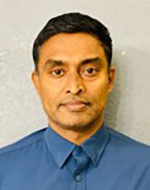 Jayakrishnan Mundarath
Jayakrishnan Mundarath
Jayakrishnan (Jay) Mundarath (S’04–M’06-SM'16) received his B.Tech. Degree in Electronics and Communication Engineering in 1999 from National Institute of Technology, Calicut, India. He received his MS and PhD, both in Electrical Engineering from the University of Wisconsin-Madison in 2003 and 2006. respectively. His active research interests include signal processing for next generation communication systems/standards, advanced multi-antenna algorithms, machine learning based wireless communication systems, and, versatile SoC architectures for 5G and beyond. Since 2006 he has been employed with NXP Semiconductors (previously, Freescale Semiconductor Inc.) where he is developing advanced SoC architectures and algorithms for multiple application domains including 5G user side and base station devices.
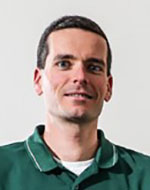 Charles Baylis
Charles Baylis
Dr. Charles Baylis is a Professor of Electrical and Computer Engineering at Baylor University. At Baylor he directs the Wireless and Microwave Circuits and Systems Program, launched in 2008 to provide wireless and microwave education and research in a caring, Christian environment, and also serves as Director of the Hub for Spectrum Management with Adaptive and Reconfigurable Technology (SMART Hub), a spectrum research and workforce development center encompassing 35 researchers at 17 universities. His research in reconfigurable circuit and system technologies for adaptive spectrum systems has been funded by the Army Research Laboratory, National Science Foundation, Office of Naval Research, Naval Research Laboratory, and Raytheon
IPA-7: Sub-THz Innovations for 6G Wireless
(12 April, 14:00 CST, 415A, 4th Floor)
Moderator: Carlos Faouzi Bader, Technlogy Innoation Institute-TII
Panelists:
Mohamed-Slim Alouini, King Abdullah University of Science and Technology (KAUST), Saudi Arabia
Peiying Zhu, Senior Vice President of Wireless Research, Huawei Technologies Co. Ltd., Canada
Didier Belot, Programs Management, DSYS (System Department), CEA LETI, France
Alain Mourad, Director Engineering R&D, InterDigital Europe, UK
Abstract: Sub-Terahertz (THz) communications is envisioned as an enabling and highly promising wireless technology for the sixth generation (6G) and beyond wireless systems. This is due to several interesting features of THz waves, including the tens and hundreds of gigahertz bandwidths available (from 0.1 to 10 THz.). The THz band gives access to many applications in very diverse domains, ranging from Terabit WPAN to Terabit/s file transferring, small backhaul cells, server farms, or virtual and augmented reality applications. Nevertheless, there are many challenges from the device, communication, and networking perspectives, which require fundamentally new solutions to unlock the Sub-THz band for mobile communications applications. In this context, this panel aims to go over the opportunities and challenges of communication systems operating in the THz band by focusing on the research directions of potential RF technologies, and their development roadmap for lower 15GHz bands, mmWave bands, and Terahertz bands, to realize the diverse KPI for 6G.
Questions:
- In practice, what are the most crucial technological obstacles or challenges that the scientific community need to advance on or to solve at short, mid, and long term to achieve a possible deployment of the Sub-THz communications technology and services?
- What kind of innovations the sub-THz communications can bring to 6G and how they can be benefit for the industry of the future and society?
- Is the optical-fiber’s long-haul strengths, coupled with improvements in terahertz wireless signal generation and handled with photonic technology, constitute part of the solution for a data-hungry society?
- Will Sub-THz communications require a disruptive redesign of the existing 3GPP 5G NR mmWave protocols?
- Should sub-THz be considered for hot spot or continuous coverage?
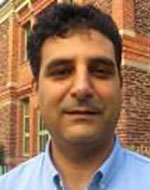 Carlos Faouzi Bader
Carlos Faouzi Bader
C. Faouzi Bader received his Ph.D. degree (with Honours) in Telecommunications in 2001 from Universidad Politécnica de Madrid (UPM), Madrid-Spain. He joined the Centre Technologic de Telecomunicacions de Catalunya (CTTC) in Barcelona-Spain as a research associate in 2002, and from 2006- to 2013 as Senior Research Associate. From June 2013 to the end of December, he has been an Associate Professor at CentraleSupélec (France). Since 2017, he is an Honorary Adjunct Professor at the University of Technology Sydney (Australia). During 2018-2019 the Head of Signals & Communications department at the Institute of Electronics and Digital Technologies (IETR) in Rennes-France. From 2020 to the end of 2021, he took the position of the Director of research at Institut Supérieur D’Electronique de Paris-ISEP (France). From the end of December 2021, he is Director Telecom at the IA & Telecommunications Centre of the Technology Innovation Institute (TII) in Abu Dhabi-UAE.
His research activities mainly focus on IMT-advanced systems such as 5G networks and systems, Cognitive Radio communication environment, and THz wireless communications (6G). He has been involved in several European projects from the 5th-7th EC research frameworks (8 EU funded projects and ten national projects), from 2012 to 2013, he has been the general coordinator and manager of the EC funded ICT "EMPhAtiC" project focusing on "Enhanced Multicarrier Techniques for Professional Ad-Hoc and Cell-Based Communications." From 2007-2021. Prof. F. Bader has been the main coordinator of the BRAVE ANR French project at CentraleSupélec (France) where the main goal was the achievement of an efficient waveform for THz/Terabits wireless communication devices.
He has published over 45 journals, 136 papers in peer-reviewed international conferences, more than 13 book chapters, and four edited books. He served as a Technical Program Committee member in major IEEE ComSoc and VTS conferences (ICC, PIMRC, VTC spring/fall, WCNC, ISWCS, GLOBECOM, ICT). He is IEEE Senior Member since 2007.
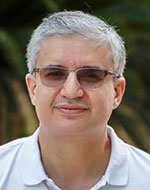 Mohamed-Slim Alouini
Mohamed-Slim Alouini
Prof. Mohamed-Slim Alouini was born in Tunis, Tunisia. He received a Ph.D. degree in Electrical Engineering from the California Institute of Technology (Ctech) in 1998. He served as a faculty member at the University of Minnesota, then in the Texas A&M University at Qatar before joining in 2009 the King Abdullah University of Science and Technology (KAUST). He is now a Distinguished Professor of Electrical and Computer Engineering. Prof. Alouini is a Fellow of the IEEE and Optica (Formerly the Optical Society of America (OSA)). He is currently particularly interested in addressing the technical challenges associated with the uneven distribution, access to, and use of information and communication technologies in far-flung, rural, low-density populations, low-income, and/or hard-to-reach areas.
 Peiying Zhu
Peiying Zhu
Dr. Peiying Zhu, Senior Vice President of Wireless Research, is a Huawei Fellow, IEEE Fellow, and Fellow of the Canadian Academy of Engineering. She is currently leading 5G and beyond wireless research and standardization in Huawei. The focus of her research is advanced radio access technologies. She is actively involved in 3GPP and IEEE 802 standards development. She has regularly given talks and panel discussions on 5G/B5G vision and enabling technologies. She led the team to contribute significantly to 5G technologies and standardization. She served as the guest editor for IEEE Signal processing magazine's special issue on the 5G revolution and IEEE JSAC on Deployment Issues and Performance Challenges for 5G.
Prior to joining Huawei in 2009, Peiying was a Nortel Fellow and Director of Advanced Wireless Access Technology in the Nortel Wireless Technology Lab. She led the team and pioneered research and prototyping on MIMO-OFDM and Multi-hop relay. Many of these technologies developed by the team have been adopted into LTE standards and 4G products. Dr. Zhu has more than 200 granted patents.
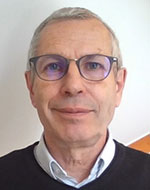 Didier Belot
Didier Belot
Dr. Didier Belot, after 30 years with STMicroelectronics, has joined CEA-LETI, Grenoble, France, in 2014. He works as European Programs Coordinator in the System Division; he participates in roadmaps orientations and Programs management. He has written for the H2020 CSA NEREID program dedicated to the 2020-2030 European Roadmap, the connectivity chapter. He participates in ECS-SRIA connectivity chapter, and IRDS Outside System Connectivity task group. He presently co-chairs the Communication & Connectivity Experts Group of H2020 CSA CORENECT project. His research present interests are the mmW propagation through the plastic; RF to Information transceiver design by Mathematics; THz communications; the III-V devices over Silicon for mmW and THz applications; and RF & mmW for Quantum computing. He was a member of the French National Scientific Council for Micro and Nanotechnology field from 2012 to 2016. He was a member of different conferences program committees such as RFIC, ESSCIRC, ISSCC, IEDM. He is a member of the IEEE-MTT-9 Technology Committee, (mmW & THz Devices to System), and EuMW TPC. He is a reviewer for IEEE MTT, and SSC journals, and author or co-author of about 200 publications and 70 patents.
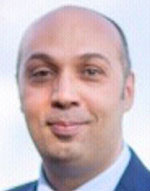 Alain Mourad
Alain Mourad
Dr Alain Mourad has 20+ years of experience in wireless industrial R&D. He is currently a Senior Director at InterDigital and the Head of Future Wireless Europe Lab in London (UK), leading research on 5G evolution towards 6G. Before InterDigital, Alain was a Principal Standards Engineer at Samsung Electronics R&D (UK) and previously a Senior Engineer at Mitsubishi Electric R&D Centre Europe (France). Throughout his career, Alain has been active in the research and standardization of wireless systems (3GPP, IEEE802, DVB, ATSC, ETSI, IETF). Alain is a prolific inventor with over 50 issued patents and several additional patent applications. He received Samsung Electronics Inventor of the Year Award in 2012 and 2013, InterDigital Innovation Award in 2016, 2018, and 2020, the 2018 Global Telecoms Award “Highly Commended” for “Advancing the road to 5G”, and the 2021 CSI Award “Highly Commended” for “Best 5G technology or service”.
IPA-8: Scaling in public and private networks with ORAN
(13 April, 14:00 CST, 415A, 4th Floor)
Moderator: Alan Gatherer, Cirrus360
Panelists:
Yago Tenorio, Vodafone
Manish Singh, Meta
Shawn Hakl, Microsoft
Venki Ramaswamy, MITRE Labs
Neelam Chandwani, Intel
Abstract: Standardization efforts in ORAN and 3GPP for 5G RAN deployment enable an unprecedented opportunity for the development of highly customized networks to support diverse and specialized applications such as Factory 4.0 and smart agriculture. But many challenges remain as to how this opportunity can be scaled from a few large and deep-pocketed customers in the public and enterprise spaces to encompass small and medium-sized businesses, rural operators, and, government entities. This panel will address these challenges and offer solutions to scaling ORAN across licensed and enterprise applications.
Questions:
- How hard is it for an enterprise customer with little RAN experience to deploy a customized RAN today, and in the future?
- What role will automation play in future RAN deployments?
- How important is the RIC to diverse deployments at scale and how will it be used?
- What are the greatest challenges to enabling diverse deployment at scale?
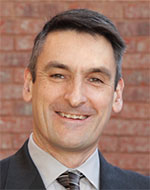 Alan Gatherer
Alan Gatherer
Alan Gatherer is currently the CTO of Cirrus360 and a Fellow of the IEEE. He is responsible for R&D and strategy for Cirrus360 modem development platforms. From January 2010 to January 2021 he was with Futurewei technologies where he was a Senior Technical Vice President in charge R&D efforts in the US to develop next generation baseband chips and software for 4G and 5G base station modems. He led development of new technologies for baseband SoC in the areas of multimode modems as a Service, interconnect and memory fabric, CPU/DSP clusters and virtualization, focusing on 5G deployment. Prior to that he was a TI Fellow and CTO at Texas Instruments where he led the development of high performance, multicore DSP at TI and worked on various telecommunication standards. Alan has authored over 50 journal and conference papers. In addition, he holds over 80 awarded patents and is author of the book “The Application of Programmable DSPs in Mobile Communications.” Alan holds a bachelor of engineering in microprocessor engineering from Strathclyde University in Scotland. He also attended Stanford University in California where he received a master’s in electrical engineering in 1989 and his doctorate in electrical engineering in 1993.
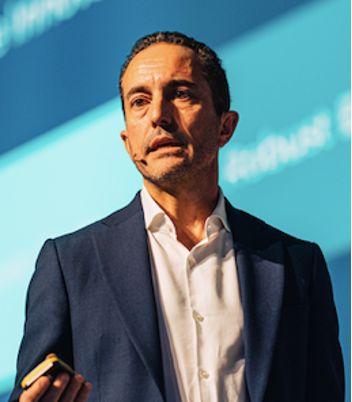 Yago Tenorio
Yago Tenorio
Yago Tenorio is a Fellow and Director of Network Architecture at Vodafone. His team delivers the Strategy and Architecture of the Fixed and Mobile Network. One of the most important missions is to lead the company into the Network as a Platform transformation, drive Open RAN in the industry and shape the 5G evolution, including AI and Low Latency services. With nearly 20 years of history, his team is recognized as one of the most innovative and influential ones in the Mobile Industry – endorsed by more than 150 patents and well-known developments such as Single RAN, and more recently Open RAN. The team has driven Vodafone to be the first European operator to announce sizeable deployment plans, with the first commercial site already live for 4G and 5G in the UK. Aside from his role in Vodafone Yago is also serving as Chairman of the Board at TIP (Telecom Infra Project) as well as Chairman of the Board at Lime Mycrosystems.
 Manish Singh
Manish Singh
Manish is a well-respected industry leader with over 20 years of experience and specializes in Wireless Networks. Manish currently supports the OpenRAN and Open Core Network Project Groups in TIP (Telecom Infra Project). For three consecutive years, he served on the Board of Small Cell Forum. Manish is a Thought Leader with a good balance of technical depth and business acumen. Before joining Meta, Manish was VP of Network Services at Tech Mahindra. And prior to that Manish served as Radisys’ CTO where he spearheaded the company’s strategic initiatives in SDN, NFV, and VoLTE (Voice-over-LTE). Prior to Radisys, Manish was the VP of Product Management at Continuous Computing, where he led the startup’s spectacular growth in Small Cells and DPI. During the course of his career, Manish held various Management and Architect positions at Intel, Trillium Digital Systems, and C-DOT. Manish holds an MS degree from I.I.Sc. Bangalore. Manish routinely features as a keynote speaker at leading industry events. He is a thoughtful writer with copious published papers and articles. Manish holds multiple patents in the fields of computing and communications.
 Shawn Hakl
Shawn Hakl
Shawn Hakl is VP 5G Strategy at Microsoft. Shawn is responsible for building and executing the product strategy and partnerships for Microsoft’s Azure for Operators portfolio. His team works across product, engineering, and sales to help operators execute on the digital transformation of the core and edge networks. Prior to Microsoft, Shawn served at Verizon as the Senior Vice President of Business Product, responsible for a $29B portfolio covering services such as enterprise networking, 4G/5G, cyber security, collaboration, and IoT.
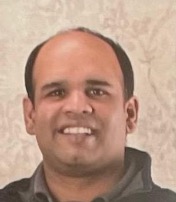 Venki Ramaswamy
Venki Ramaswamy
Dr. Venki Ramaswamy is Chief Technologist at MITRE Labs in Bedford, Massachusetts where he currently leads technical innovation and R&D activities in 5G/xG technologies. He has more than 20 years of experience in the telecommunications industry and has held technical leadership positions at various technology companies and research labs. He has published more than 50 peer-reviewed publications and patents, served as a TPC member for various conferences, and participated in several technical panels. He received his PhD is Electrical Engineering from the University of Mississippi.
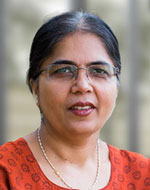 Neelam Chandwani
Neelam Chandwani
Neelam is an Intel Fellow and Chief Architect for Radio Access Network for Intel’s Network and Edge Group. She leads Intel’s 5G Cloud native RAN technology development, product architecture, system design and FlexRAN software stack design. She is also responsible for architecting next generation dynamic RAN, including leading technology development and product architecture, next-generation wireless algorithms and IPs, driving new use cases and technical industry collaborations. She also leads technical engagements with Comms Service Providers and RAN vendors. Neelam holds Bachelors in Electronics & Communication and Master’s in Computer Science and joined Intel in 2001. She has over 29 years of experience in Wireless, Communications and Networking Industry.
IPA-9: IS XR A TECHNOLOGY WAITING FOR SERVICE OR SERVICE WAITING FOR TECHNOLOGY?
(12 April, 16:00 CST, 415B, 4th Floor)
Moderator: Hemanth Sampath, Senior Director of Engineering & Head of 5G R&D for Emerging Applications, Qualcomm, USA
Panelists:
- Marie Hogan, Head of Broadband and New Business for 5G, Ericsson, Sweden
- Emily Chung, Principal Wireless Architect & Mixed Reality, Microsoft, USA
- Lance Richard Koenders, Vice President Mobile Product Management, Verizon, USA
- Aris Papasakellariou, Vice President Technology, Samsung, USA
- Devaki Chandramouli, Head of North America Standardization, Nokia, USA
Abstract: Have the stars aligned for extended reality (XR) and the coming metaverse? XR is likely to become the next computing platform. It will transform how we interact with the world around us every day, delivering unprecedented new experiences and exponentially increased productivity. XR is inherently meant to be mobile, intuitive, immersive, and always connected. However, technology advancements in low-power sensor processing, AI, and connectivity are required to enable the broad adoption of XR. This panel will explore not only the necessary technology advancements required but also any other missing ecosystem pieces to accelerate XR adoption.
Questions:
- The XR revolution is reminiscent of the early smartphone days. What XR applications can enable mass XR adoption?
- What device advancements are needed for a compelling XR experience?
- What is the role of 5G in enabling mass deployment of these low-latency and high-bandwidth services?
- How is cloud compute and infrastructure evolving to address XR deployments?
- What enhancements should operators make to offer XR services at a large scale?
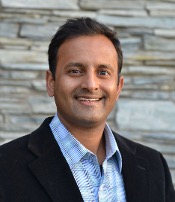 Hemanth Sampath
Hemanth Sampath
Hemanth Sampath is the Sr. director of engineering and head of 5G R&D for emerging applications at Qualcomm, focusing on XR/metaverse, cloud gaming, and private networks. Before this role, he was the Wi-Fi R&D systems engineering lead for a decade, shaping 802.11 standards and core technologies like MU-MIMO and Mesh. From 2004-to 2008, he held engineering leadership roles on the 4G (UMB) modem and standards. He received the 2013 Qualcomm IP Excellence Award and held more than 290 patents. Before Qualcomm, he worked at Iospan Wireless and Marvell Semiconductors. Hemanth received a Ph.D. degree in Electrical Engineering from Stanford University in 2001.
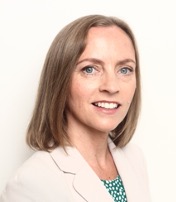 Marie Hogan
Marie Hogan
Marie Hogan leads the strategic product management team responsible for the Mobile Broadband, Voice, and New Business areas of 5G radio access networks at Ericsson. Her main responsibilities include driving the new 5G use cases for consumers and enterprises in the XR, real-time media, mobility automation, remote control, and industrial control areas with a focus on technologies such as URLLC and time Critical Communication. She also works with key functionality for the ongoing 5G RAN deployments including peak-rate evolution,multi-standard RAN, and optimization of 5G radio access. Additionally, Marie focuses on the evolution of 4G radio access solutions both to meet the continuing demands on existing LTE networks and to facilitate the co-existence with and migration to 5Gfor technologies such as NB-IoT and CAT-M. She has worked in many areas within Ericsson from product development to product management spanning 3G, 4G, and 5G technologies. Marie has worked with both radio and core network solutions as well as with transport, synchronization, and security solutions. She holds a Master of Science in Technology Management and a degree in Electronic Engineering
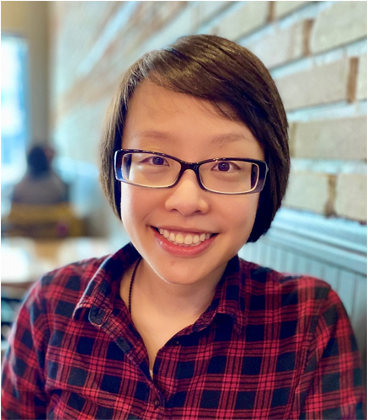 Emily Chung
Emily Chung
Emily Chung is a Principal Wireless Architect Lead for Mixed RealityArchitecture at Microsoft Corporation. Emily heads the Wireless andRF silicon architecture, and Wireless System Architecture for MixedReality/Augmented Reality devices. Emily works with a talented team to prototype and drives innovation in wireless systems for MR/AR use cases. Prior to this role, Emily held roles in Silicon and SystemsArchitecture at Microsoft, Intel, and Microchip. Emily has contributed to a wide range of technologies and products, including wireless, networking, storage, data-center, and consumer
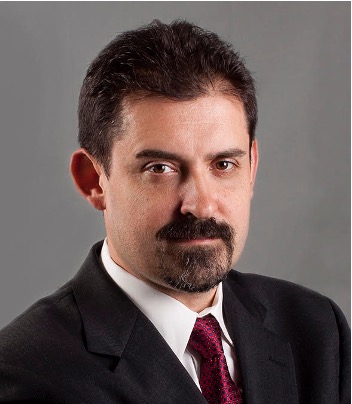 Lance Richard Koenders
Lance Richard Koenders
Lance is an entrepreneur, product leader, and technical business strategist with over 25 years of experience in the technology, service provider, and entertainment industries. At Verizon, he is the VP of Mobile Product Management, leading their portfolio of mobile products. His portfolio includes voice & messaging, security &protection, financial services, cloud, gaming, and metaverse products. He previously led their home device product portfolio, including broadband and video products. Prior to joining Verizon in late 2018, Lance held a wide range of roles at Intel with over 18 years of services, including four years as the Chief of Staff & TechnicalAssistant to EricKim, SVP/GM of the Digital Home Group, 3 years leading marketing for Intel’s Digital Home Group, and almost four years leading Global Service Provider Sales for their Connected HomeDivision. In the middle of his career at Intel, Lance took three years off to build five companies focused on video streaming, content recommendations, new media, and digital advertising. His unique background gives him a broad understanding of the changing face of mobile communications, home broadband, and entertainment content production and distribution
 Aris Papasakellariou
Aris Papasakellariou
Aris Papasakellariou Vice President for TechnologyStandardization with Samsung Electronics. His primary activities are on 3GPP standardization. He originated many of the most fundamental functionalities for the 4G/LTE and 5G/NR PHY layer operation and contributed to the design of nearly all verticals. He received the 3GPP excellence award in 2017 and the global Gold award of Samsung Electronics in 2018. He is the editor of TS 38.213(NR; Physical layer procedures for control). Aris Papasakellarioureceived his Ph.D. from Rice University.
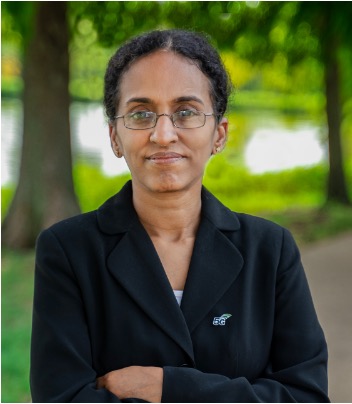 Devaki Chandramouli
Devaki Chandramouli
Devaki Chandramouli received her B.E in Computer Science from Madras University (India) and M.S in Computer Science from University of Texas at Arlington (United States). She is a Nokia Bell Labs Fellow and Head of North American Standardization at Nokia, responsible for standardization and external engagements in NAM. She serves as a Steering Group Co-chair in Next G Alliance. She serves as the rapporteur and lead for 5G System Architecture specification, Private Network, Industrial 5G in 3GPP SA2, received 3GPP Excellence award in 2021. Her current focus is on 6G architecture research, 5G-Advanced features such as XR services, Timing resiliency and URLLC enhancements. She has co-authored IEEE papers on 5G published by IEEE, co-authored a book on “LTE for public safety” published by Wiley in 2015 and co-edited the book on “5G for the connected world” published by Wiley in 2019. She has co-authored 200+ approved and pending patents in wireless communications.
IPA-10: Ideas to reality - Bringing 6G to life through testbeds
(11 April, 16:00 CST, Room 415B, 4th Floor)
Moderator: Chen Chang, National Instruments.
Panelists:
Lizy Paul, Director for 5G.MIL® Programs at Lockheed Martin Corporation.
Srinivas Shakkottai, Professor of Computer Engineering, Texas A&M University
Chris Dick, Member of the Aerial 5G wireless team at Nvidia
Tim Hentschel, Founder and COO of Barkhausen Institute
Kaushik Chowdhury, Professor, Faculty Fellow ECE department, Associate Director at Institute for the Wireless IoT at Northeastern University, Boston
Abstract: Testbeds have played a critical role in making 5G a reality, from small-scale in-lab over-the-air (OTA) transmissions proving physical layer improvements such as LDPC & polar coding to large city-scale field testing like the PAWR testbeds in the US. In 6G, testbeds will continue to fill this crucial development gap between theory and reality. We are in the most exciting stage of the 6G technology development cycle where anything seems possible. Many in academia and industry are talking about the different applications. They use cases that could be enabled by a new wireless standard like 6G - but what will drive those applications and use cases and turn them from ideas into reality? This panel will discuss the different tools and methodology that will be necessary to develop new technology to bring the early promises of 6G to reality.
Questions:
- What are key enabling technology for 6G? Sub-THz? Extreme MIMO? Joint Sensing & Communication? AI/ML?
- Is it feasible to use sub THz for mobile communication? How can we prove it for commercial viability?
- What are some of the other innovations (like semiconductor packaging advancements) needed for deploying mobile systems at subTHz and beyond?
- What are some of the biggest hurdles you see to 6G test and prototyping?
- What role does prototyping and test beds play to bring new wireless technology to fruition?
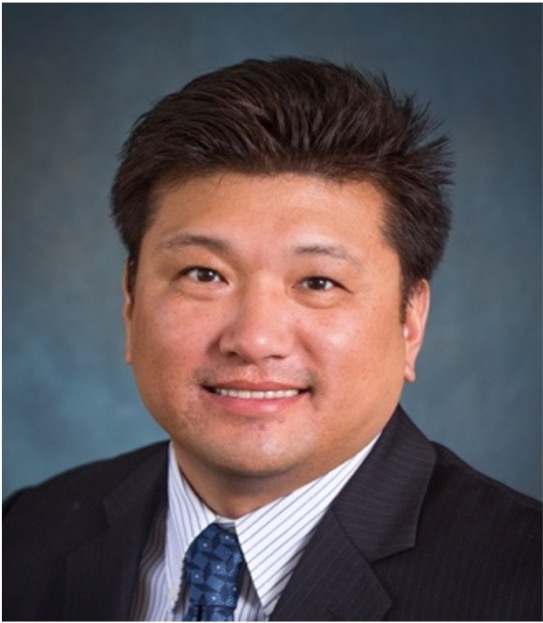 Chen Chang
Chen Chang
Chen Chang is the strategic business development senior director at National Instruments (NI), leading cross-BU 5G+6G business strategy and offering roadmaps. He is responsible for P&L, product strategy, and roadmap planning for NI’s semiconductor validation and electronics RF test products and solutions. Chang has over 15 years of a tech startup and corporate experience, an entrepreneur and business leader, working in both the United States and China. Chang was the co-founder and Chief Executive Officer at BEEcube Inc., which National Instruments acquired in 2015. He joined NI with a breadth of expertise spanning sales, marketing, product management, operations, and engineering across various markets from ASIC design, 5G wireless prototyping, electronics & semiconductor test. Chang holds B.Sc., M.Sc., and Ph.D. degrees in Electrical Engineering and Computer Science from the University of California, Berkeley.
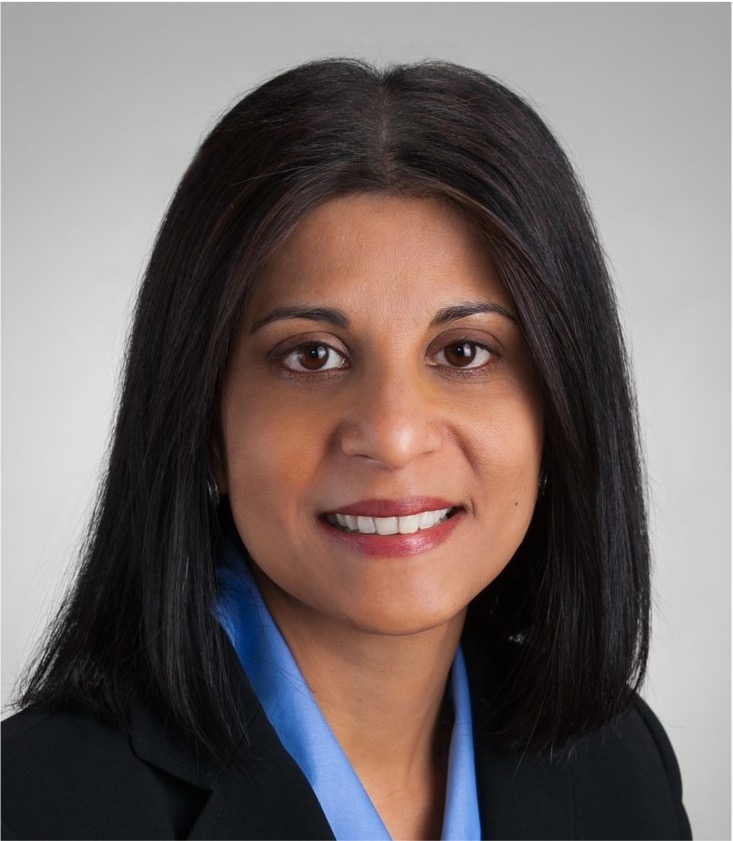 Lizy Paul
Lizy Paul
Lizy Paul is the Director for 5G.MIL® Programs at Lockheed Martin Corporation. She leads the strategy and execution of the 5G and advanced communication technology solution programs in this role. She is also responsible for the strategic A&D industry relationships and the execution of the 5G.MIL® customer engagement strategy. She chairs the 5G.MIL® Programs External Advisory Council and the 5G.MIL® Standards IPT. Prior to Lockheed Martin, Lizy was the Director of Technical Strategy for the Defense Communications and Networking Solutions at Raytheon Technologies. She has held various Engineering leadership and research positions at Motorola, Ericsson, and Hughes Network Systems. Lizy served as the elected Chair of the National Spectrum Consortium (NSC) in 2021 and an NSC Executive Committee Member (2019-2021). Lizy has an MSEE from Johns Hopkins University and an MBA from the University of Iowa. She holds 16 US patents in the area of RF Communication technologies.
 Srinivas Shakkottai
Srinivas Shakkottai
Dr. Srinivas Shakkottai is a Professor of Computer Engineering at the Department of Electrical and Computer Engineering and the Department of Computer Science and Engineering (by courtesy) at Texas A&M University. Srinivas received a Ph.D. in Electrical and Computer Engineering from the University of Illinois at Urbana-Champaign in 2007. He was a postdoctoral scholar in Management Science and Engineering at Stanford University until 2008. His research interests include wireless networks, caching and content distribution, multi-agent learning and game theory, and reinforcement learning. He is also interested in systems design and networked application development, particularly wireless. He co-directs the Learning and Emerging Networked Systems (LENS) Laboratory at Texas A&M University. Srinivas serves as an Associate Editor of IEEE/ACM Transactions on Networking. He is the recipient of the Defense Threat Reduction Agency Young Investigator Award (2009) and the NSF Career Award (2012), as well as research awards from Cisco (2008) and Google (2010). He also received an Outstanding Professor Award (2013), the Select Young Faculty Fellowship (2014), and the Engineering Genesis Award (2019) at Texas A&M University.
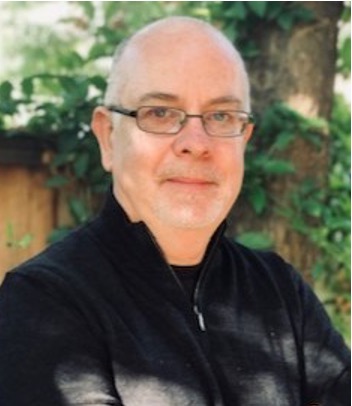 Chris Dick
Chris Dick
Chris Dick is a member of the Aerial 5G wireless team at Nvidia, which is creating the future of 5G wireless and combining it with the power of Nvidia AI technology to make Industry 4.0 a reality. His research interests are in the areas of 5G/6G, hardware architectures for machine learning, GPU architecture, programming models for machine learning accelerators, software-defined radio (SDR), forward error correction, modem design, FPGA signal processing, wireless systems, massive MIMO, hardware architectures for real-time signal processing, fast algorithms, multi-rate filters, DSP design flows and programming models for reconfigurable hardware. His signal processing background includes expertise in the following areas: machine learning, modem architecture, synchronization for wireless systems, carrier recovery, timing recovery, adaptive equalizers, channel coding, computer arithmetic, turbo codes, and LDPC. In addition to his experience in the wireless domain, Chris has performed signal processing work in the area of speech and imaging radar (inverse synthetic aperture radar (ISAR)) signal processing. Chris has been an advisor to the National Science Foundation in Application-Specific Hardware/Software and FPGA-based and Reconfigurable Systems and has advised the US Defense Sciences Research Agency - an advisory arm of DARPA. He holds the position of adjunct professor at Santa Clara University. Chris has over 200 publications and has been an invited speaker at many industry events. He holds over 70 patents.
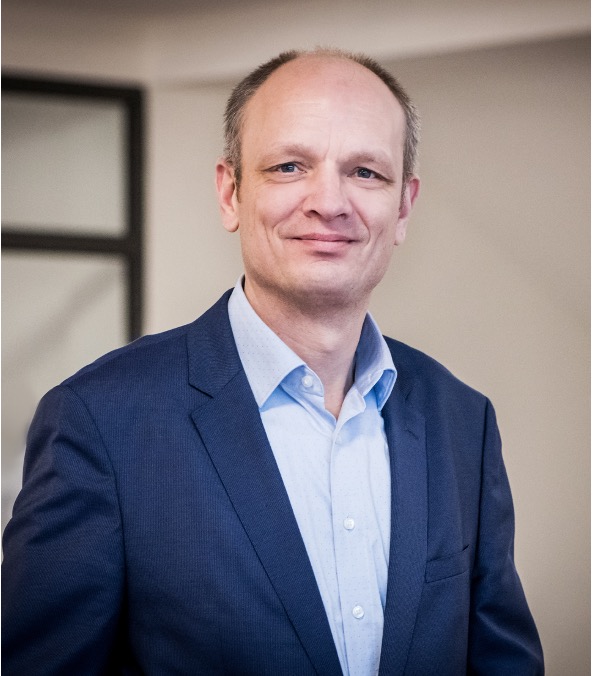 Tim Hentschel
Tim Hentschel
Tim Hentschel received his Ph.D. from the Technical University of Dresden in 2001. He co-founded Signalion, a test and measurement provider for LTE radio test equipment, in 2003. As CEO, he led Signalion's successful growth. After the acquisition by National Instruments, he managed the NI Dresden site while holding various positions in product marketing and innovation at National Instruments. In October 2018, he moved to the newly founded Barkhausen Institute, where he is COO and manages the institute's growth.
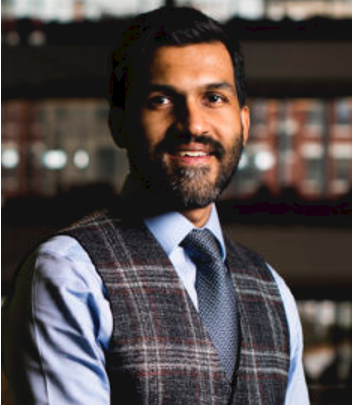 Kaushik Chowdhury
Kaushik Chowdhury
Kaushik Chowdhury is Professor and Faculty Fellow in the ECE department and Associate Director at the Institute for the Wireless IoT at Northeastern University, Boston. He was awarded the US Presidential Early Career Award for Scientists and Engineers (PECASE) in 2017, the DARPA Young Faculty Award in 2017, the Office of Naval Research Director of Research Early Career Award in 2016, and the NSF CAREER award in 2015. He has received best paper awards at several conferences that include INFOCOM, GLOBECOM, ICC (3x), SenSys, ICNC, and DySpan. He is presently a co-director of the Platforms for Advanced Wireless Research (PAWR) project office and the Colosseum RF emulator. His current research interests span applied machine learning to wireless systems, unmanned aerial systems, and at-scale experimentation for emerging 5G and beyond networks. He has served as the TPC Chair for major IEEE and ACM conferences, including IEEE INFOCOM 2021, IEEE CCNC 2021, IEEE DySpan 2021, and ACM MobiHoc 2022.
IPA-11: Making Sense of Comms - Deliberate co-design of signals for communications and sensing
(12 April, 16:00 CST, 415A, 4th Floor)
Moderator: Todd Humphreys, The University of Texas at Austin, USA
Panelists:
Peter A Iannucci, UT Austin, USA
Cristina Seibert, NEXTNAV, USA
Salam Akoum, ATT, USA
Harish Viswanathan, Nokia Bell Labs, USA
Abstract: Future wireless networks will increasingly employ waveforms designed to simultaneously support sensing and communication. Radar and lidar sensors mounted on 5G/6G stations will perform ranging but may also be modulated to carry high-rate data to vehicles equipped with radar/lidar sensors. Low-entropy (e.g., pilot) signals embedded in wireless waveforms will be used to estimate channel state information, as with previous-generation cellular systems, but the placement and cadence of these embedded signals will also be informed by the network's positioning and timing needs. Broadband signals from low-earth-orbit (LEO) constellations will be dual-purposed for positioning and timing as a backup to GPS. Information about an urban landscape gleaned from hybrid communications-sensing signals will be assimilated into live 3D spectral and physical occupancy maps that, together with models of causality, can be used to anticipate channel conditions. The "Making sense of comms" panel session will speculate on the rising need for sensing in communications networks and discuss signal/protocol design that enables sensing without significantly reducing communications throughput.
Questions:
- I recently read a paper about a system that would offer decimeter-level positioning within a cellular network but would require 3% of the network's bandwidth be allocated to sensing (ranging in this case) as opposed to communications. Is this a non-starter, or would a carrier consider a 3% sacrifice to support high-reliability sensing at a few inches?
- Harish Viswanathan and his co-authors have articulated a vision for 6G that calls for creating authentic digital twin representations of the physical world. What sensing modalities and density would be required to develop such multi-layered maps? Indoor and out?
- What are the key ideas on which we could base efficient joint design of communication and sensing?
- Is the task of satisfying communications and sensing goals best modeled as a zero-sum game? In other words, is bandwidth allocated to sensing lost to communications and vice versa? Or can sensing be made to benefit communications?
- How is joint sensing and communications relevant for the emerging constellations of LEO satellites such as SpaceX's Starlink?
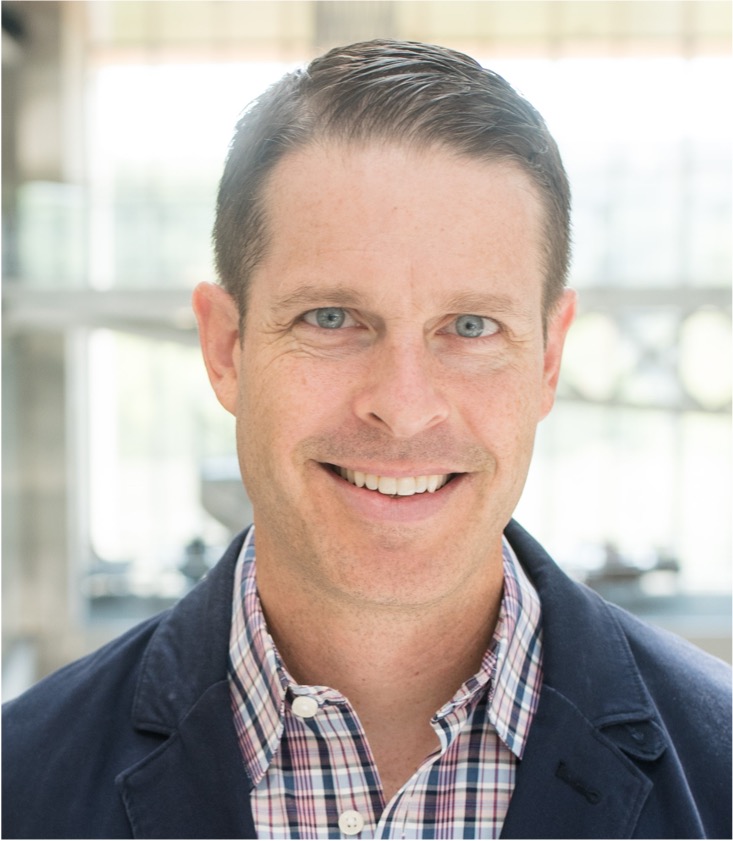 Todd Humphreys
Todd Humphreys
Todd Humphreys (Member, IEEE) received his BS and MS in Electrical Engineering from Utah State University in 2000 and 2003, respectively, and his Ph.D. in Aerospace Engineering from Cornell University in 2008. He is a Professor in the Department of Aerospace Engineering and Engineering Mechanics at The University of Texas at Austin, where he directs the Radionavigation Laboratory. He specializes in the application of optimal detection and estimation techniques to problems in sensing and communications. His awards include The University of Texas Regents' Outstanding Teaching Award (2012), the National Science Foundation CAREER Award (2015), the Institute of Navigation Thurlow Award (2015), the Qualcomm Innovation Fellowship (2017), the Walter Fried Award (2012, 2018), and the Presidential Early Career Award for Scientists and Engineers (PECASE, 2019). He is a Fellow of the Institute of Navigation and of the Royal Institute of Navigation.
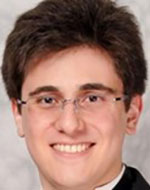 Peter A Iannucci
Peter A Iannucci
Peter A. Iannucci (BS, Electrical Engineering-Computer Science and Physics, MIT; PhD, Networks and Mobile Systems, CSAIL, MIT) is a postdoctoral research fellow in the Radionavigation Laboratory at The University of Texas at Austin, and a member of the UT Wireless Networking and Communications Group (WNCG). His current research interests include collaborative navigation, multi-spectral mapping, and re-purposing broadband Internet satellites for radionavigation.
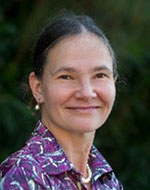 Cristina Seibert
Cristina Seibert
Dr. Cristina Seibert is Vice President of Technology and Standards at NextNav where she heads the Standards department and directs research and development in resilient position, navigation and timing (PNT) solutions. She is a subject matter expert in wireless communication and networking, and the field of PNT. Dr. Seibert is an active member of various leading standard organizations and working groups including the IEEE P1952 where she is Chair of the Resilience Level Definition SG, at ATIS where she is Vice-Chair of the SYNC Committee, at CTIA where she is Chair of the OTA MBS Task Force, as well as at RTCA and 3GPP. Dr. Seibert holds a Ph.D. degree in Electrical Engineering from Stanford University, and MEng and B.S. degrees in Electrical Engineering and Computer Science from Massachusetts Institute of Technology.
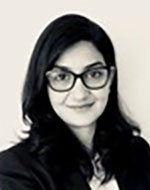 Salam Akoum
Salam Akoum
Salam Akoum received the Bachelor of Engineering degree in computer and communications engineering with a minor in mathematics (Hons.) from the American University of Beirut, Lebanon, in 2006, the Master of Science degree in electrical engineering from The University of Utah in 2008, and the Ph.D. degree in electrical engineering from The University of Texas at Austin in 2012. She is currently a Principal Member of Technical Staff with the Advanced Radio Technology Group, AT&T Labs. She is also an Active Contributor to 3GPP 5G standardization, responsible for specifications of the physical-layer of the radio interface. She works on algorithm development and system architecture and optimization for current and next-generation wireless networks.
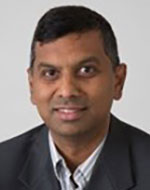 Harish Viswanathan
Harish Viswanathan
Harish Viswanathan is Head of Radio Systems Research Group in Nokia Bell Labs. He received the B. Tech. degree from the Department of Electrical Engineering, Indian Institute of Technology, Chennai, India and the M.S. and Ph.D. degrees from the School of Electrical Engineering, Cornell University, Ithaca, NY. Since joining Bell Labs in October 1997, he has worked extensively on wireless research ranging from physical layer to network architecture and protocols including multiple antenna technology for cellular wireless networks, multi-hop relays, network optimization, network architecture, and IoT communications. From 2007 to 2015, Harish was in the Corp CTO organization, whereas a CTO Partner he advised the Corporate CTO on Technology Strategy through in-depth analysis of emerging technology and market needs. He is a Fellow of the IEEE and a Bell Labs Fellow.
IPA-12: Sustainable 6G System
(13 April, 16:00 CST, 415A, 4th Floor)
Moderator: Devaki Chandramouli, Nokia
Panelists:
Stephen Hayes, Ericsson
Ralph Bendlin, AT&T
Micaela Giuhat, Microsoft
Clara Li, Intel
Abstract: Every new G presents an opportunity to design a new e2e system. Also, new applications, use cases and service requirements present new challenges and (sometimes contradictory) requirements (e.g. extreme low latency, ultra-high reliability yet cost effective and energy efficient). New 6G System should also be designed in such a way that it caters to new and unknown applications. This panel will explore various research areas, challenges that must be considered early enough to ensure that we have a robust and sustainable 6G System.
Questions:
- What are the key research areas and challenges to be addressed with 6G architecture?
- Evolutionary or revolutionary?
- What are the drivers for a new architecture?
- What are the key factors to consider for ensuring sustainable 6G System?
- How do we ensure smooth migration from 5G to 6G?
Biographies:
 Devaki Chandramouli
Devaki Chandramouli
Devaki Chandramouli received her B.E in Computer Science from Madras University (India) and M.S in Computer Science from University of Texas at Arlington (United States). She is a Nokia Bell Labs Fellow and Head of North American Standardization at Nokia, responsible for standardization and external engagements in NAM. She serves as a Steering Group Co-chair in Next G Alliance. She serves as the rapporteur and lead for 5G System Architecture specification, Private Network, Industrial 5G in 3GPP SA2, received 3GPP Excellence award in 2021. Her current focus is on 6G architecture research, 5G-Advanced features such as XR services, Timing resiliency and URLLC enhancements. She has co-authored IEEE papers on 5G published by IEEE, co-authored a book on “LTE for public safety” published by Wiley in 2015 and co-edited the book on “5G for the connected world” published by Wiley in 2019. She has co-authored 200+ approved and pending patents in wireless communications.
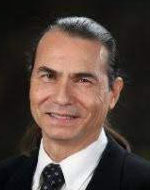 Stephen Hayes
Stephen Hayes
Stephen Hayes is the Vice President of Standards for Ericsson for the Americas. He has worked on various cellular issues over the last 30 years and been heavily involved in the evolution of the 3GPP family of technologies. His current focus includes the ATIS committees and 3GPP. Particular areas of interest include UAVs and Robotics. He is also involved in several US advisory groups such as the FCC TAC (Technical Advisory Council) and the FCC CSRIC (Communications Security, Reliability, and Interoperability Council).
Stephen received the 2021 3GPP Lifetime Achievement Award has held many 3GPP leadership positions (Vice-chair of 3GPP TSG-RAN, Chair of 3GPP TSG-SA, Chair of 3GPP TSG-CT). Stephen is currently the vice-chair of the ATIS Next-G Technology Working Group.
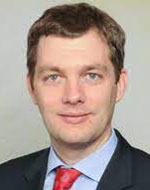 Ralf Bendlin
Ralf Bendlin
Dr. Ralf Bendlin is a Principal Member of Technical Staff at AT&T Labs in Austin, Texas. Before joining AT&T, he was a Senior Wireless Systems Architect with Intel Corporation and a Systems Engineer with Texas Instruments Inc. He has worked on algorithm development, performance prediction, optimization, systems architecture, spectrum research, and technology strategy for current and next-generation wireless networks and has actively participated in the definition of several global communications standards.
Dr. Bendlin holds a Bachelor’s degree and a Master’s degree from the Munich University of Technology in Munich, Germany as well as a Master’s degree and a Ph.D. from the University of Notre Dame in South Bend, Indiana. All degrees are in Electrical Engineering and Information Technology.
He was a Guest Editor for the IEEE Transactions on Cognitive Communications and Networking (TCCN) and the Technical Program Chair of both the IEEE GLOBECOM 2019 Workshop on High-Dimensional, Low-Resolution Architectures for Power-Efficient Wireless Communications and the 2017 IEEE International Symposium on Dynamic Spectrum Access Networks. He served as presidential appointee on the Advisory Council of the College of Engineering and is currently a member of the Industry Advisory Council of the Department of Electrical Engineering, all at the University of Notre Dame. During his career he has received several awards, most recently the AT&T Science and Technology Medal.
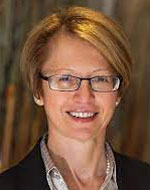 Micaela Giuhat
Micaela Giuhat
Micaela Giuhat joined the Microsoft’s 5G Policy team in August 2020. Prior to that, she hold executive roles in several telecom companies, most recently she served as a Vice President of Market Strategy for Metaswitch Networks. Micaela brings along more than 30 years of industry experience, with previous executive positions in leading Cloud Communications, and IP Networking companies in the U.S as well as abroad.
She has extensive telecom background, and experience, contributions and leadership in different standards and industry bodies, such as ITU, Softswitch Consortium, and has been on the Board of Directors of the i3Forum until 2020. In 2021 she was nominated Vice-Chair of the Green G working group and Chair of the Policy Committee of the Next G Alliance, as well as Co-Chair of the FCC CSRIC working group 3. Her experience spans wireline and wireless communications, with focus on virtualization, cloudification and 5G, in different roles, such as Product Management, Product Marketing, and M&A. Giuhat holds a master in EE from the Romanian Polytechnic Institute, and a MBA from Ottawa University.
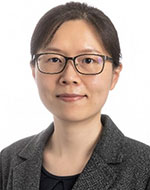 Clara Li
Clara Li
Dr. Clara Li is a Senior Principal Engineer with the Next Generation and Standards division of Intel. Since joined Intel in 2012, Clara has been working on LTE and 5G communications system design and standardization in the area of air interface, radio access network, core network, and edge computing. Clara is currently leading 6G technology development in Intel. She also serves as the Chair of the Technology Steering Committee of IOWN GF. Clara received her PhD degree from Nanyang Technological University, Singapore in 2011. She has more than 40 IEEE journal and conference publications, 4 book chapters, and 28 US patents.







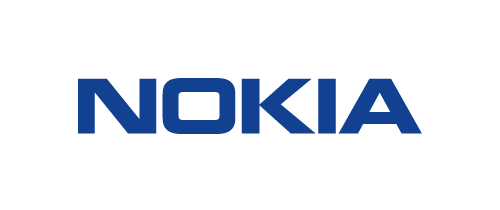

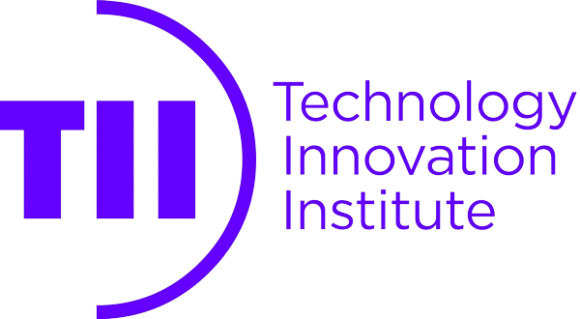



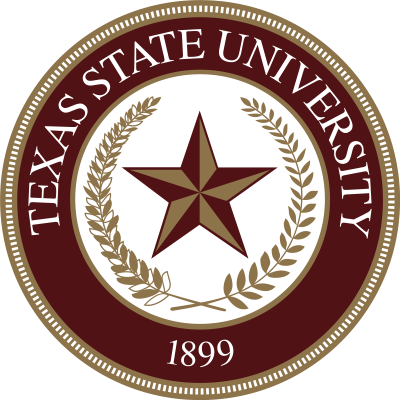
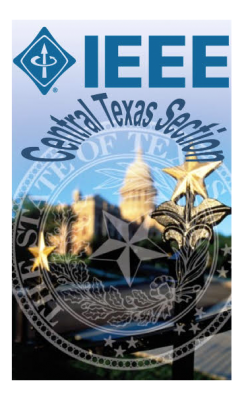
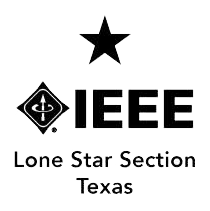
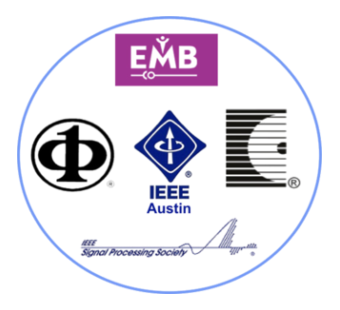

.png%3Fitok=HPhdjq1T)
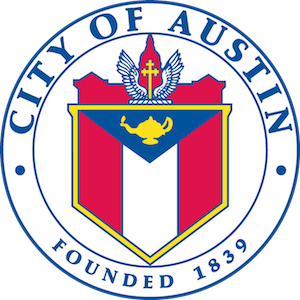
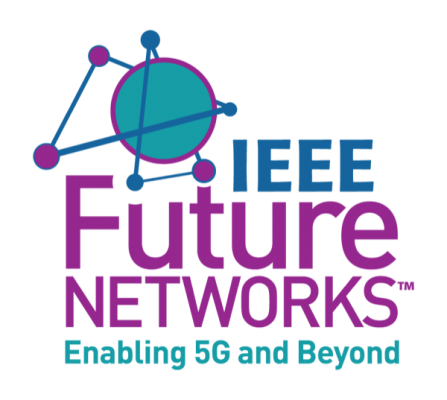
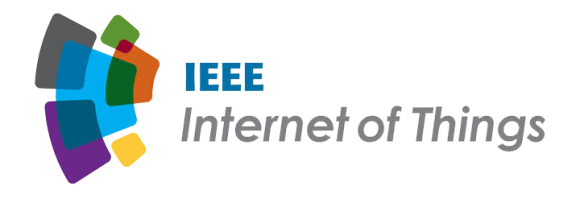
_0.png%3Fitok=n0ncuwzS)